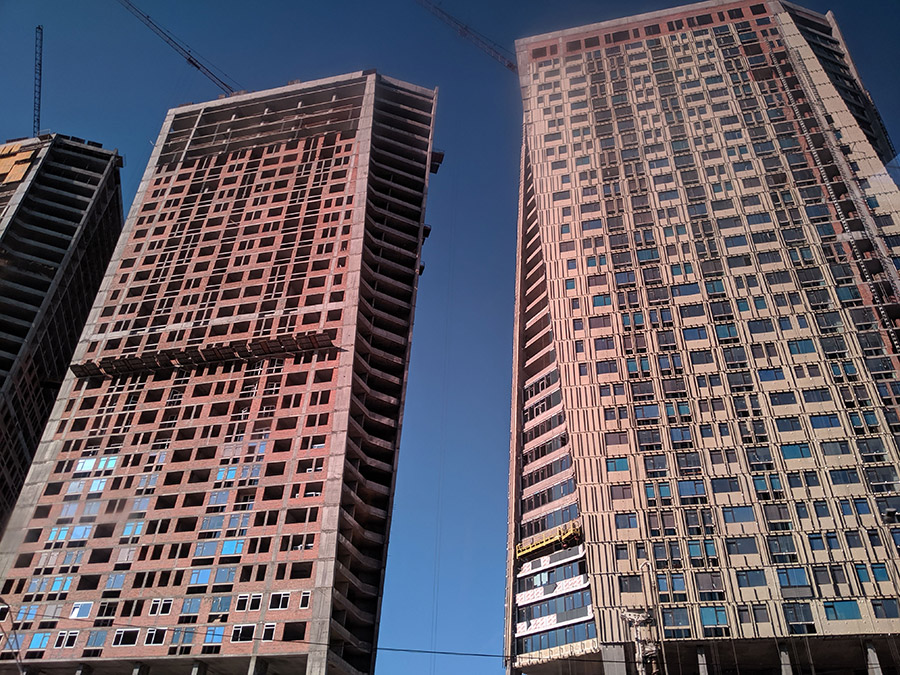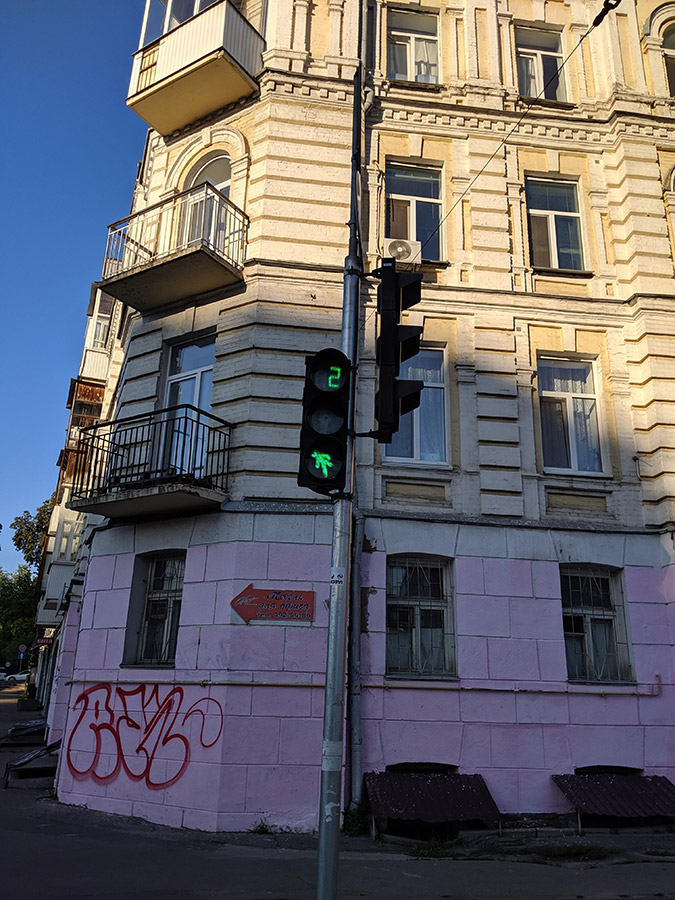


Jesus, why is our driver going so fast?
The trees whirred by as our van barreled down the road. Maybe this is just how they drive in the Ukraine? It’s not like we’re going to hit anything out here, but-
Suddenly, all the Geiger counters in the van went off at once.
BEEP BEEP BEEP BEEP BEEP BEEP.
All around me, the alarms were sounding, indicating loudly that the safe level of radiation had been exceeded. I looked at the small yellow Geiger counter I’d been carrying since we entered the Chernobyl Exclusion Zone. The reading on the LCD screen had wandered between 0.2 and 0.35 depending on where we were at the time. Now it was suddenly at 9.0.
So this is the Red Forest.
On April 26th, 1986, at 1:23 in the morning, reactor number 4 at the Vladimir Ilyich Lenin Nuclear Power Plant near Chernobyl exploded, sending unthinkable amounts of radiation a kilometer up into the sky. The pine forest downwind of the reactor was hit with so much radiation it turned red and died, and ultimately all the trees had to be cut down and buried due to their high levels of radioactivity. The forest had grown back in the years since and looked relatively normal, but radiation levels were still high enough 33 years later that our driver was clearly trying to get us through this zone as quickly as possible.
After a minute of hauling balls through the abandoned countryside, all the Geiger counters quieted down and went back to sleep, their occasional clicks serving as the background soundtrack to our travels, like a bowl of Rice Krispies running out of steam.
We pulled over and took in the twice-entombed reactor off in the distance.

Across the cooling channel, the cranes that were being used to build reactors 5 and 6 sit rusting, exactly were they were that morning in 1986.
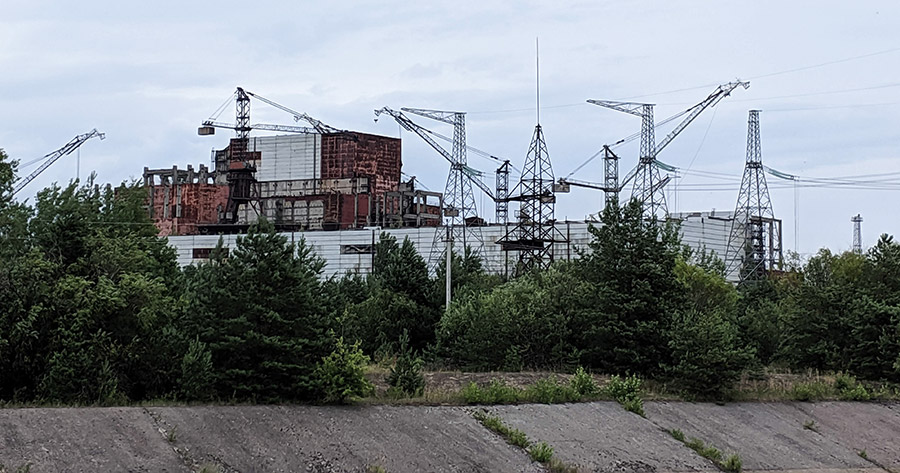
The only other vehicle we saw on that eerie abandoned road, a bus that looked like it was vintage from the 80s (if not 30 years older than that), cruised by with a friendly honk.

Back in the van and before we knew it, we where pulling up surprisingly close to reactor 4 itself, the epicenter of a distaster that very nearly destroyed all of Europe.
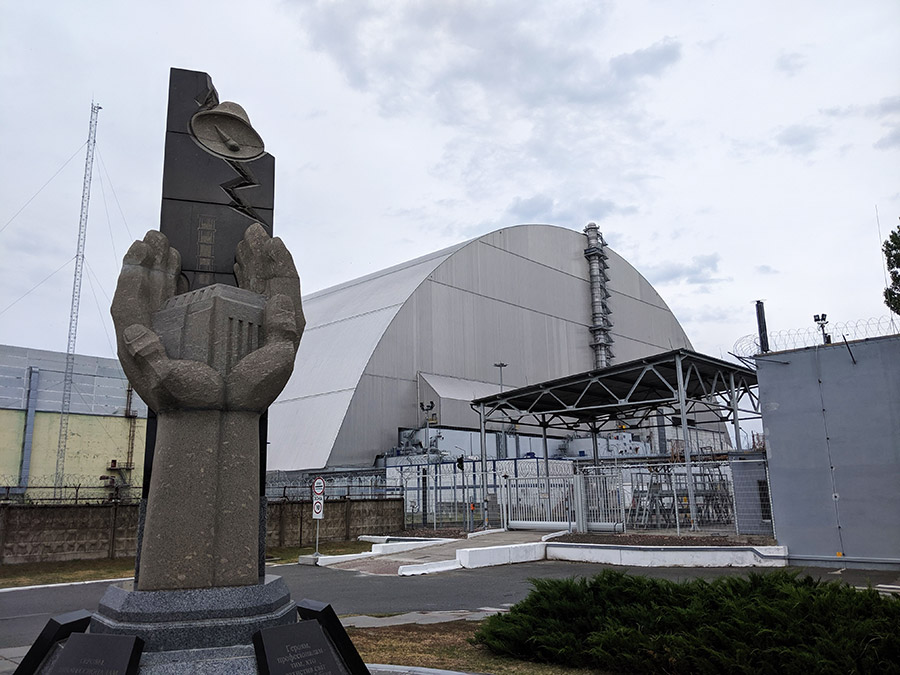
The day before the explosion, the staff at the plant began a planned powering down of the reactor for safety testing, tests that technically should have been passed before the reactor was opened two years before, but the records of three previously failed tests had been fudged to allow the opening to happen. Now the heads of the plant were under intense pressure to pass the test before the cheat was discovered. But after the plant had been partially powered down, party officials called to order a delay in the test until the middle of the night, to allow factories in the region to continue to run throughout the day.
This 10-hour delay resulted in xenon building up within the core, a byproduct that is normally burned off when the reactor is running at normal power. When the less-experienced and untrained night shift began the test, the reactor’s power levels dropped far further than expected due to the built-up xenon inhibiting the reaction. The output dropped from a planned floor of 700 megawatts suddenly down to 30 megawatts in a frightening freefall, risking total reactor shutdown. Fission reactions in RBMK reactors are regulated by 211 neutron-absorbing control rods inserted into the uranium core, which are essentially the brakes on the system. In a panic, the staff began to remove the rods in order to bring the reaction back up to the expected level necessary for the test.
Anatoly Dyatlov, the deputy chief-engineer of the plant, overrode the objections of his staff and disabled the plant’s safety systems, threatening to ruin the careers of anyone who questioned him. He ordered more and more control rods removed until only 18 remained, far fewer than the minimum ever intended to be used in any scenario. It was an insanely risky move, but Dyatlov felt confident he could always fall back on the SCRAM emergency shutdown system if the reaction got out of hand.
Which is exactly what happened, the reaction spiraling rapidly out of control as the coolant boiled and created pockets of steam that accelerated a feedback loop of rising reactivity. An engineer stationed on the catwalk overlooking the reactor’s 1,000 ton lid ran into the control room, yelling that the dozens of 772 pound fuel rod caps, which together make up the lid like one of those pin impression art toys you pressed on your face at The Sharper Image in the mall in the 80s, were all leaping up and down like frogs on a pond. The reactor was approaching the temperature of the surface of the sun. Oh shit. Oh shit oh shit.
The control room’s failsafe AZ-5 button was hit to initiate the SCRAM, which tragically had the opposite effect to what anyone there was expecting. The Soviet Union had kept as a closely-guarded secret what they’d discovered during an incident at their Ignalina Nuclear Power Plant in 1983: The graphite that the RBMK control rods had been tipped with as a cost-cutting measure had the potential to momentarily increase reactivity, the opposite of what would be expected, before the reaction-killing boron section of the rods came into contact with the core. The spike at Ignalina wasn’t deadly because the chief engineer there wasn’t driving the power plant like a shirtless drunk in a convertible fleeing a bank robbery. Chernobyl wasn’t so lucky.
The sudden power spike caused by the graphite tips shattered the control rods, preventing them from being inserted any further into the core. Now there was nothing at all to stop the reaction, and it was off to the races. The last reading in the control room showed the reactor at 30,000 megawatts, ten times beyond normal output, but researchers estimate the actual level was at least ten times higher than even that. No one in the control room knew about what had happened at Ignalina, so everything that was occurring at this point was well outside the realm of anything they even considered possible. It must have been absolutely terrifying.
With the reactor running at 120 times full power, the nuclear fuel disintegrated. A low moan echoed through the building as the water used to cool the reactor vaporized, spiking the pressure inside reactor 4. Suddenly, an immense steam explosion blew the massive reactor lid off into the sky. The lid came back down onto the reactor at an angle like a wrecked crock pot.
Air rushed into the reactor, setting the superheated graphite on fire and converting the coolant water into hydrogen gas, which caused a second huge explosion, blowing graphite and parts of the reactor itself out onto the lawn and onto the roofs of the other reactor buildings, setting them on fire.
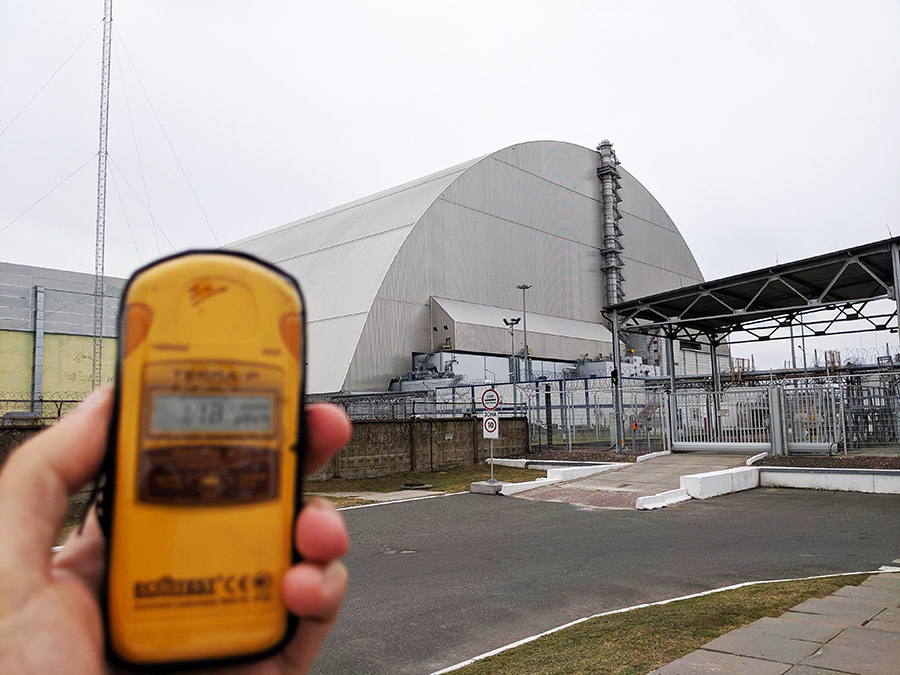
The members of the power plant staff who weren’t killed instantly scrambled to contain the damage, all while fighting to convince a deeply in denial Dyatlov that the reactor had exploded. In his defense, at that point in history no one even understood how a RBMK reactor could explode, it was like claiming your swimming pool had exploded. The chain of events that led to the explosion hadn’t even been imagined before.
But the sympathy for Dyatlov fades after a number of plant workers ran into the control room, yelling things like “The roof is gone!” “I just looked down into the reactor core! The fucking core!” right before they barfed and dropped dead on the floor, and he responded with “Fake news!” and “Get out of here with that hysterical nonsense, it was probably something you ate.” Needless to say, Dyatlov doesn’t come across well in this story and was ultimately sentenced to ten years of hard labor for gross negligence in his actions at the plant that day.
Not that he was alone in the blame. Party officials had kept the known reactor flaws from their own personnel and failed to make simple changes after Ignalina that would have prevented this disaster.
The things the plant workers experienced in the moments after the explosion are almost unimaginable, like the reactor section foreman who looked straight down into the open reactor core while trying to manually lower the control rods after the explosion, or the control room engineers who waded into the reactor coolant to open feedwater valves in an attempt to contain the reaction. It’s hard to imagine knowingly sacrificing yourself like that, but at the same time how could you not when you’re weighing your one life against millions?
Before long the local firefighters arrived, responding the reports of a fire at the plant. Amazingly, for days this is all anyone knew about the incident, that there was a fire on the roof. Because of this, the firefighters who showed up were completely screwed. One picked up a strange rock on the front lawn of the plant, which turned out to be a hunk of graphite from inside the core. For his curiosity he got a “you’ve got about ten minutes to live” dose of radiation. All of the firefighters were exposed to unimaginable levels of radioactivity. That night, the firefighters who didn't drop dead on the spot were taken to the hospital in nearby Pripyat. Their clothes were so radioactive the nurses had to strip them off and dump them down in the hospital basement, where they’re still sitting today, far too radioactive to even be touched.
One of the firefighters' beanies was dropped on the way in and is still sitting in the front doorway of the hospital, still alarmingly radioactive. You can’t even go into the building due to how radioactive the rest of the clothes are, though I heard crazy rumors that the firefighters’ helmets had all been stolen by souvenir-hunters over the years. This was kind of mind-boggling to me, like taking cancer home as a souvenir.
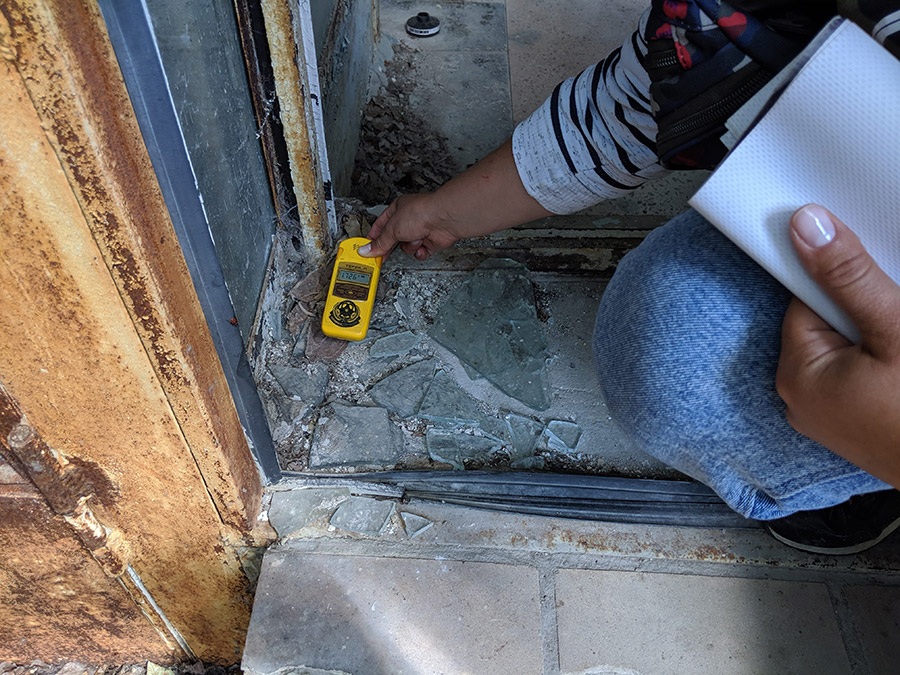
The events of the days and months after the explosion were in some ways even more dramatic than the explosion itself. Due in part to the denial of Dyatlov and the other plant officials, no one even knew the reactor had exploded for a day and a half. This was based somewhat insanely on readings taken with plant Geiger counters that showed only moderate levels of radiation, never mind that the level shown also happened to exactly match the maximum possible reading on these cheap-ass Geiger counters. The sound you just heard was the universe face-palming.
The people living in nearby Pripyat, a city constructed to house the plant workers, went about their lives as if nothing had happened. The night of the explosion, crowds gathered on a bridge in Pripyat to watch the blue laser beam of ionized air that shot straight from the plant up into the heavens, followed by beautiful thousand-foot-high multi-colored flames as the graphite burned off. Reports are mixed as to whether any of the people watching from the “Bridge of Death” that night survived.
It took 36 hours for the denial to burn off and for Pripyat to be evacuated. 53,000 people were given 50 minutes of notice to drop everything and leave their homes behind, even being told to leave their pets behind because they would return in three days. They would never return again.
In total, 350,000 people were evacuated from the surrounding region, aboard long convoys of buses that looked exactly like the one that had just cruised past us on the road. All the abandoned pets were shot by liquidation crews to avoid the further spread of radiation.
The Soviet Union’s official account that 31 people died as a result of the disaster reflected only immediate deaths among the plant workers and first responders. Estimates of premature deaths from the radiation exposure run as high as 80,000 people.
The fire in the reactor burned for two weeks, as helicopters took 1,800 flights over the plant to dump thousands of tons of sand and boron on the fire. The 600 pilots involved were all exposed to the high levels of radiation streaming straight up out of the exposed reactor core.
During this time the Soviet Union kept the disaster a secret, unwilling to admit to any flaws in the Soviet system. The world discovered what had happened soon enough, when that Monday a worker at a nuclear power plant in Sweden set off a radiation detector on his way out of the plant, leading to the discovery of a huge cloud of radioactive gas from Chernobyl that had drifted over Scandinavia, Germany and Czechoslovakia. People in Germany and Denmark were keeping their children indoors and stocking up on potassium iodine while the people in Pripyat still thought there had just been a harmless fire on the roof of the plant.
For the Soviets, Chernobyl was the disaster that just kept giving. After putting out the fire in the reactor, they realized that the core had melted down into radioactive lava that was growing hotter under all that sand and boron, and was in danger of melting through the concrete floor of the reactor. This was a bit of a problem because if the molten core contacted the water that had collected in the basement, the resulting explosion would be unprecedented in scale and would lead to the meltdown of the plant’s three other reactors, potentially rendering all of Europe uninhabitable for thousands of years.
Three plant workers had to volunteer to wade through the basement’s highly radioactive pools in the dark to open the valves that would drain the water. They succeeded and, against insane odds, somehow survived.
Whew! Disaster averted! Only now the Soviets realized the core was still likely to melt through the basement and eventually hit the water table connected to the Black Sea, which was even worse than the aforementioned scenario. Four hundred miners were brought in from Tula and Dobas to dig a tunnel under the reactor so that cooling equipment could be installed to prevent the core from melting through the floor. The miners toiled underground for weeks in searing, brutal heat, working naked because using fans would have kicked up radioactive dust, which once inhaled means guaranteed cancer. In all, one of every four of these miners died from radiation exposure. As the ultimate kick in the nuts, the tunnel ended up not even being needed, as the rampaging core eventually stopped short of the basement floor.
The melted core is still there today, known as the “Elephant’s Foot” for the shape it settled in, and it remains I think one of the craziest things that’s ever been photographed. Pretty sure this guy isn’t still alive today:
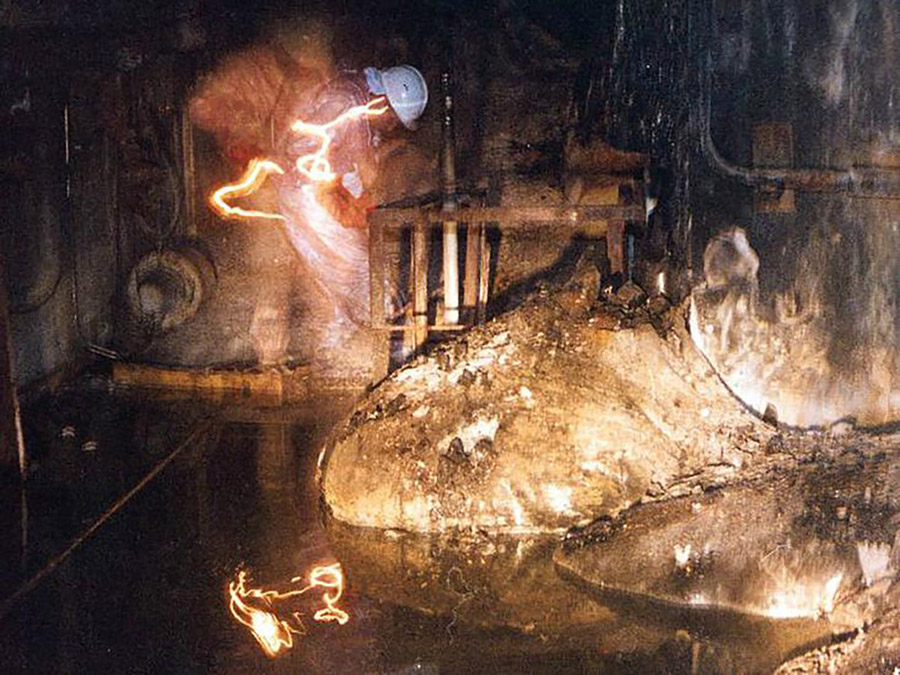
So, okay! Disaster finally averted for real this time! Except… well the reactor’s still leaking radiation everywhere and there are hunks of radioactive graphite all over the roofs of the other reactor buildings. Remote-controlled tractors were brought in to push the crazy-radioactive graphite off the roofs, but the tractors that didn’t fall through the collapsing roof quickly failed due to the astronomical radiation levels. In the end, this problem required a human touch, and thousands of soldiers were brought in to shovel the graphite off the roof in 90 second shifts, in an attempt to limit their exposure. Which is a bit like somebody stabbing you in a really considerate way.
As for the reactor, a massive sarcophagus of concrete and steel was built over the gaping hole, sealing all the remaining radiation inside. This worked fairly well for about 30 years, until the sarcophagus began to leak and the fact that it was built resting on top the collapsing remains of the wrecked reactor building grew more troubling. By now the Soviet Union had long-since collapsed, and Ukraine didn’t have “preventing massive ecological disaster” money, so the international community had to fund the construction of the New Safe Confinement, a high-tech shell built over the original sarcophagus. The NSC was completed in 2018.
One of the interesting challenges of building the NSC was protecting the builders from the radiation levels at the site. The creative solution was having the entire structure built over a thousand feet away and then moved on rails to cover the reactor, making it the largest object ever moved on land.
Building the dome tall enough to contain the smokestack of the reactor wasn’t practical, however, so workers had to cut the original smokestack off before the NSC could be slid into place, which exposed those workers to bonkers levels of radiation just for old time’s sake. This was in 2016. So much for “man the Soviets sure did crazy shit back in the 80s.”
By the time the original sarcophagus was completed, the total radiation the reactor had released into the environment was equivalent to the Hiroshima bomb being dropped on the same spot 400 times. And so the USSR still had to deal with the fact that the entire area around Chernobyl was all batshit radioactive. Over 600,000 liquidators were brought in to hose down all the buildings, remove contaminated materials, and kill any wildlife found in the area. Full containment would have required removing and burying the first few inches of topsoil from the entire region, which was of course impossible, so they just took the measures they could. The health impacts to the liquidators have been a controversial topic for decades, as many claim that the Soviet Union ignored reports of illness and death resulting from radiation exposure and that the official statistics are a whitewash of what actually happened to these people.
Our guide Ulyana, a young Ukrainian woman who was born two months after the disaster, seemed to have lived a life inextricably connected to that morning in 1986. Her mother was so terrified that Ulyana would be born with birth defects due to the radiation, she never had any other children. Her grandfather was one of the liquidators charged with cleaning up the impossibly radioactive landscape after the disaster. And now she was leading tours through the zone, rotating two weeks on, two weeks off, as mandated to mitigate the radiation exposure for anyone working within the 1,000 square mile exclusion zone around the reactor.
We spent the night at the Desiatka Hotel in Chernobyl. This is surely among the crazier lines on my resume. Although located firmly within the Exclusion Zone, the town of Chernobyl was actually spared from the worst of the radioactive fallout, and is a relatively safe place to stay today. The hotel was fairly normal except for the fact that none of the staff spoke any English at all and the grounds were patrolled by extremely friendly but extremely sketchy-looking dogs.

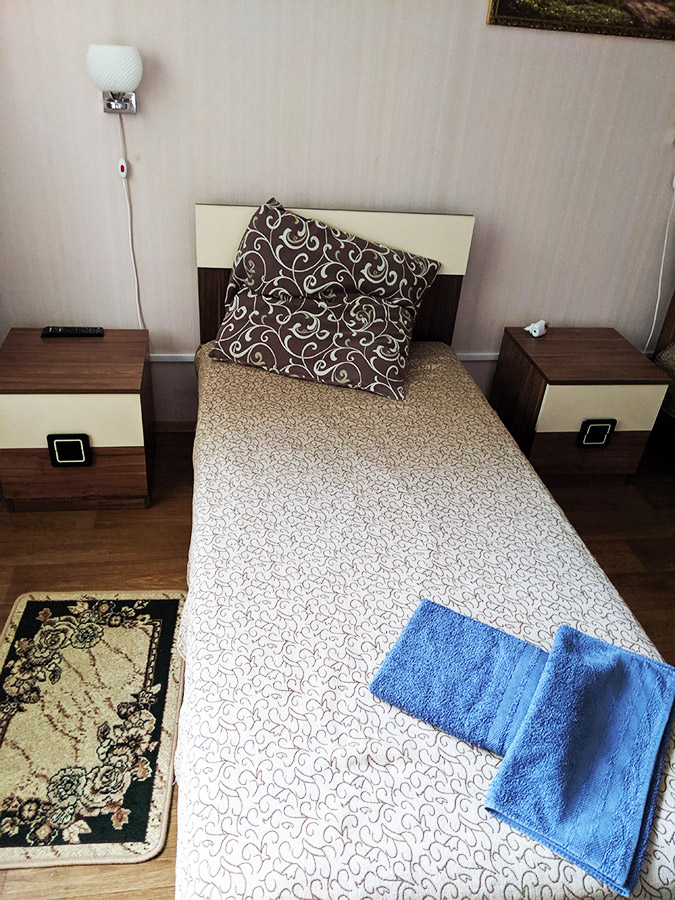
I woke up early on our second morning and wandered out from the hotel. This wasn't exactly a planned event, it was more like I was watching the tiny, squeaking birds flying in rapid, circling formations over the parking lot and then oh hey look at those pretty roses

and look at that weird street light
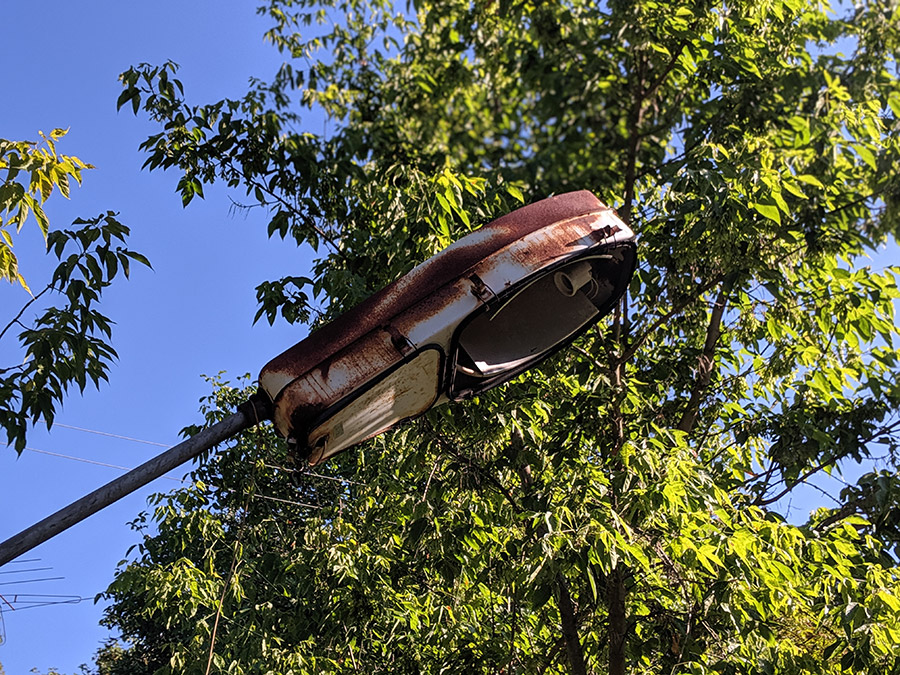
and there's a cool abandoned house over there
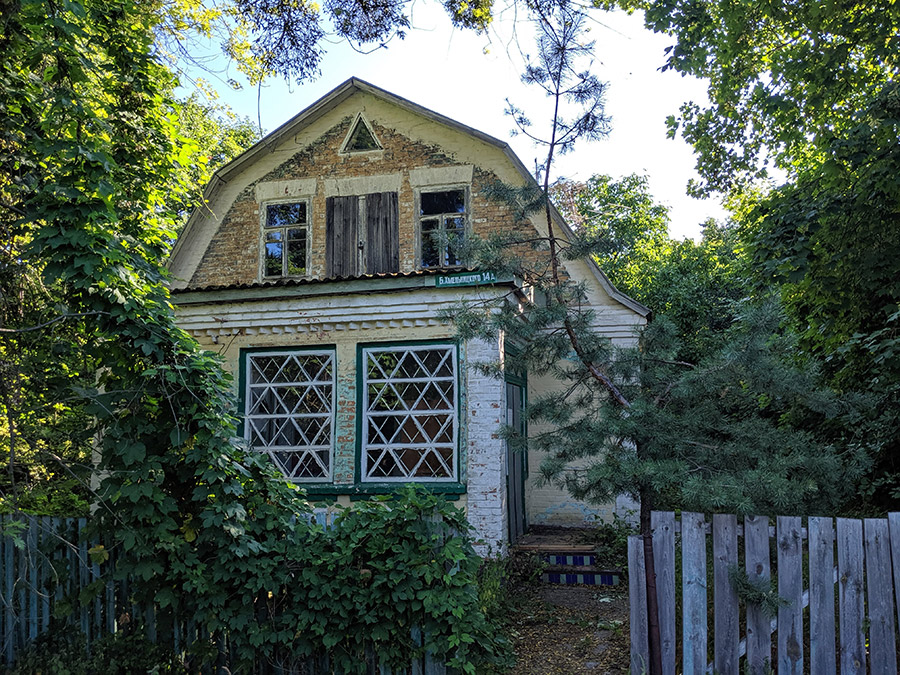
and hey this road keeps going, there are more cool houses over here.
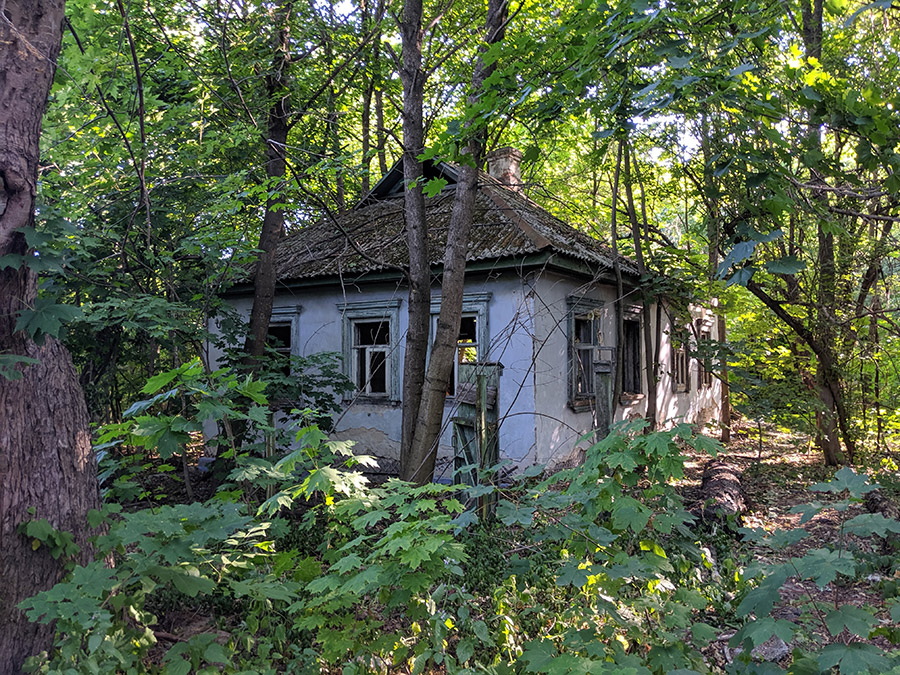
Before I knew it I was deep into a neighborhood of fading, abandoned homes. Wow this is so cool- And then my blood stopped flowing when I heard the barking.
I looked up the road, and three huge, terrifying, and pretty much by definition radioactive dogs were barking ferociously, and more importantly, tearing ass straight toward me at full tilt crazy-dog speed. Uhhhhhhh-ohhhhhh.
The Exclusion Zone has been largely reclaimed by nature, and part of that nature are the packs of stray dogs who have survival-of-the-fittested through god knows what to scratch out a living in a nuclear wasteland. These are the dogs that ate all the other dogs that were too mean for the liquidators to kill. They're big, crazy, and look like they've been through hell and kicked hell's ass.
The instinct here is to run. Instinct is too soft a word. It is very, very difficult to not turn around and run for your life in the moment when you realize three dogs that look like German shepherds crossed with the cast of Mad Max are coming for your soul. But running from a dog guarantees that it will chase you, and then you're probably fucked. I may have been able to make it back to the hotel before the dogs caught up with me and dragged me screaming down into the underworld, but dogs are fast and these guys were really hauling ass. And I probably run faster in my imagination than I do in real life. Definitely.
Regardless, basically none of these thoughts ran through my head in the one second I had to decide on a course of action, and I just reacted on instinct. Thankfully my instincts have been rewired from the default ("Dogs dogs dogs shhhiiit ruuun!"), likely by my stray dog encounters on Easter Island. So instead of running, I stopped and extended my arms out, making myself appear as large as possible in the "Fuck You I'm an Anteater" pose, and said loudly to the dogs "OK! OK!"

This was not what the dogs were expecting at all. They stopped dead in their tracks immediately, pausing to contemplate this strange new creature they had encountered, which might even be an anteater.
A strange balance was suddenly and improbably reached, as the dogs stopped and laid down contentedly in the street. The tension was suddenly gone. It’s difficult to even convey the incongruity, the way the dogs instantly switched from death squad attack to lazing about like they were on a beach and all was well. I suppose it's possible that by standing my ground I'd made the dogs question if they could take me or not, or I'd just successfully called their bluff. But honestly, in that moment it felt like something had bent in a higher dimension, some channel was opened and it felt unmistakably to me like the dogs had got my telepathic message that we were cool and I wasn't going to invade their space further, and so of course there was no longer a problem for them. It was one of the strangest moments I’ve ever experienced, but I wasn’t going to look a near-death escape in the mouth so I rolled with it.
I slowly but steadily backed away down the street, careful not to show the dogs my back, then turned the corner and I was gone.
When I told my tour friends what had happened later that morning, they were flabbergasted.
“Wait wait wait wait wait- YOU LEFT THE HOTEL??”
Unlike those neighborhood marauders, the stray dogs that hung out in front of the Chernobyl hotel all day, laying on the parking lot asphalt like corpses, always audaciously in the way, were sweet, friendly, and likely carrying every disease ever known to man. These guys were always coming by sheepishly and endearingly for a pet, an urge I resisted because I like my hands. Jesus, dog, why are you covered in used band-aids? Why are you the wrong color? That's not even a dog color.
At one point a scraggly dog came over and licked the back of my hand while I was reading about the fall of the Soviet Union on my phone. This is probably okay, I thought, then immediately noticed several small and strange bugs crawling across my saliva-wet skin. Okay I’m just going inside to wash my hands in scalding hot water seven times now, see you later dogs.
As cool as it is to see the actual power plant, the main attraction here is clearly Pripyat, the abandoned city.
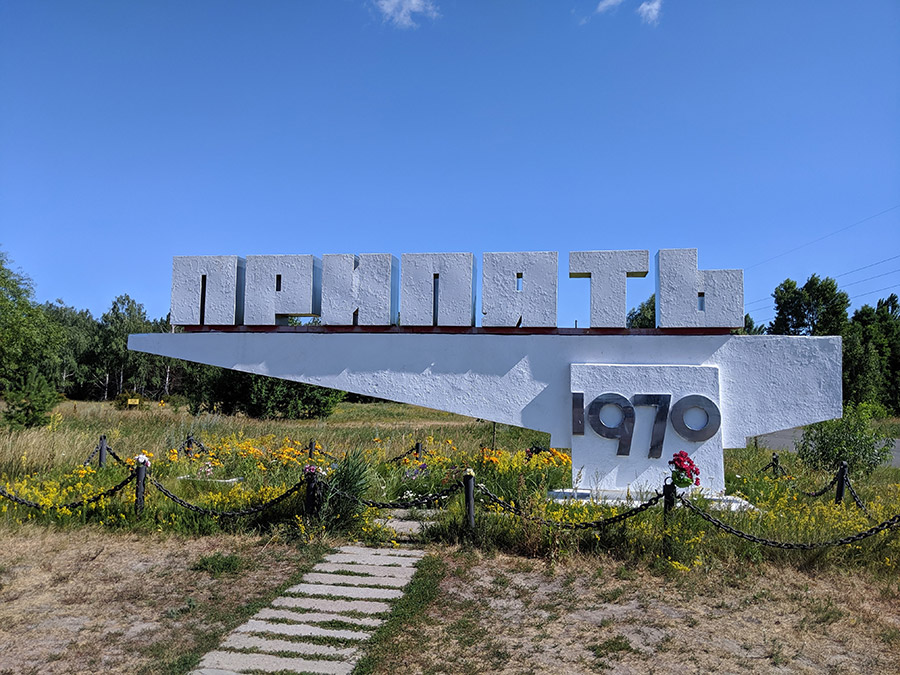
At the “Welcome to Pripyat: A Friendly Smile that Glows” entrance sign, we looked out across the woods and marveled at the completely random distribution of the radioactive fallout from the disaster. We tend to think of radiation as invisible but predictable, expanding uniformly out from an dangerous but obvious epicenter, and growing weaker as the range extends. But that’s not exactly how it works. The radioactive particles are actual physical things, and after they were shot out of the reactor way up into the sky, they came down where they did dependent on the wind, rain, and a million other random variables. Because of this, you can be standing in a spot with very low radiation levels, then take a step to the left and have your Geiger counter go through the moon. It’s surreal.
Pripyat caught a lot of the fallout, while the town of Chernobyl received comparatively little. Belarus was much more heavily impacted than Ukraine, which is still a source of tensions between the two countries today.
Nearby to the sign, there’s a metal pipe sticking out the ground that’s crazy radioactive. Metal seems to be better at holding onto radioactivity than the ground.

It’s also surreal to realize how objects exposed to radioactivity become highly radioactive themselves, like the firefighters’ clothes or even their bodies. The pregnant wife of one of the firefighters lost her baby just from visiting the hospital and getting too close to him as he died.
Entering Pripyat, we climbed the endless concrete steps inside the tallest building, an apartment block whose roof would give us a killer view of the entire city.
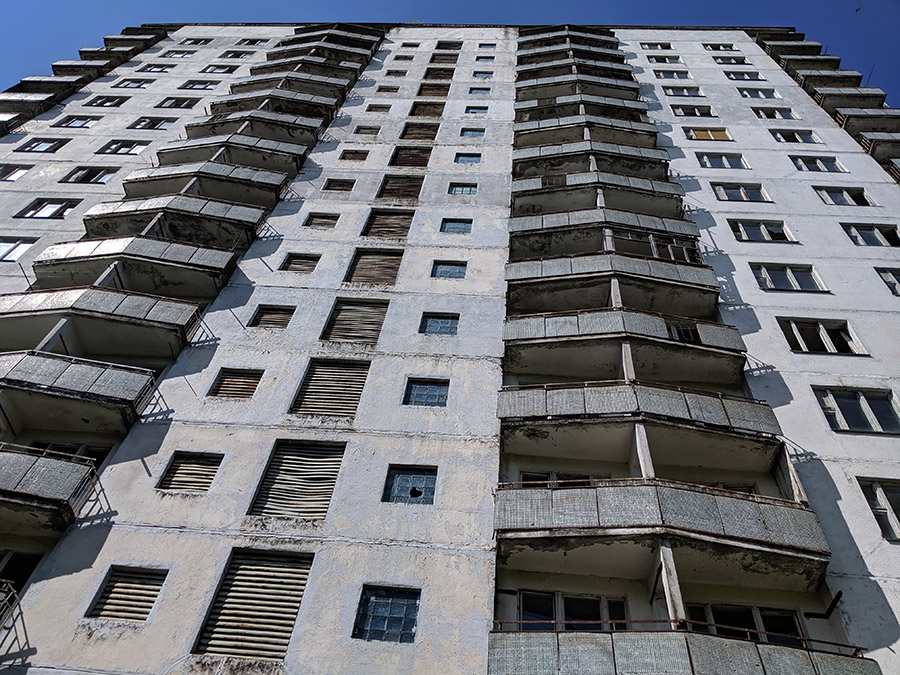
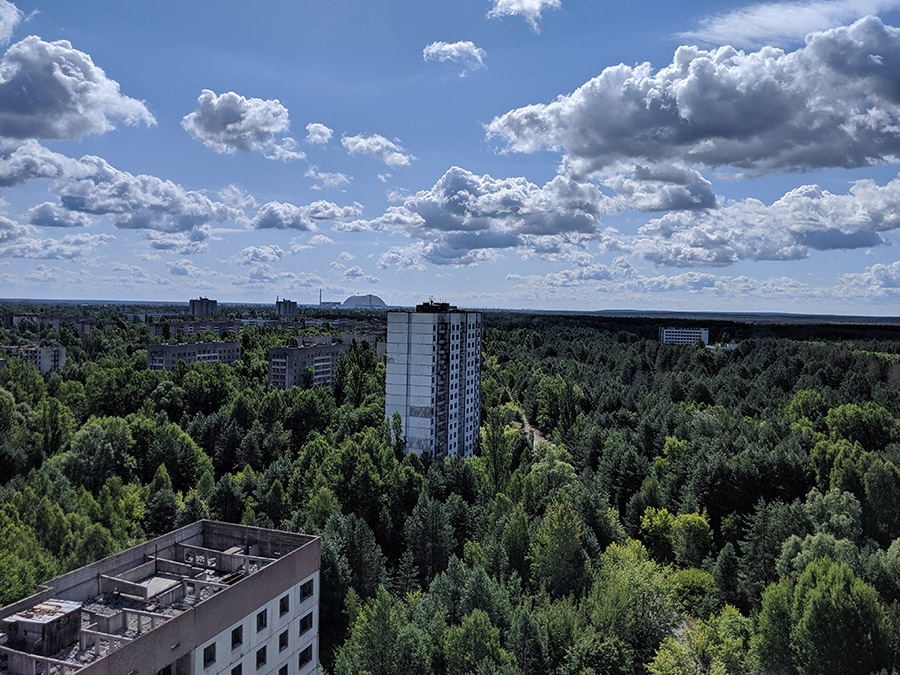
This is as good a time as any to answer the question on everyone’s mind: Is Hopper really dead on Stranger Things? No I’m kidding the question is “Sean are you crazy going to Chernobyl and all the radiation aren’t you going to fall apart like a sloppy joe now?”
Assuming you don’t do anything especially stupid, the amount of radiation you receive from two days in the Exclusion Zone is about equivalent to what you get from taking a transatlantic flight. This is something I actually discovered when I was researching Fukushima before traveling to Japan in 2017. You actually get a lot more radiation than you think from flying, due to having less atmosphere shielding you from outer space, which is packed to the gills with radiation. Pilots and flight attendants are unexpectedly categorized with power plant workers in terms of their occupational risks of radiation exposure.
So now you’re not worried about Chernobyl and instead are worried about flying. But the other thing I’ve learned is that radiation isn’t quite as dangerous as people tend to think it is. I mean, in terms of cancer. It may fuck up your aura completely or make you start liking Carrot Top movies or something, but cancer is really all they study right now. Yes, high levels will fuck you up hard, but living on planet Earth there’s no such thing as no radiation, and you have to be exposed to quite a lot before you shit out your pancreas or Hulk out and save New York from aliens. Ironically, the long-term effects of Chernobyl not being anywhere near as bad as what was expected is what convinced doctors and scientists that radiation isn’t quite as bad as we once thought it was, though I think the public at large is still in the “any radiation at all is going to give you cancer” mindset.
Granted, radiation exposure is cumulative so you wouldn’t want to live here or eat food grown here, but all in all I think the dozen flights I took on this trip were probably more harmful than my 48 hours in the Exclusion Zone.
A few friends asked if I was taking iodine pills while I was in Chernobyl. Something I didn’t learn about radiation until this trip is that iodine pills are only relevant in the first few weeks after a nuclear accident. Taking iodine prevents your thyroid from absorbing radioactive iodine from the atmosphere, but radioactive iodine has a half-life of 8 days, so any that was released by the Chernobyl reactor has been long gone since around mid-1986.
One of the ironies of visiting Chernobyl is that everyone is worried about the radiation exposure, when there are several other things there that are probably more dangerous. Not even counting the insane dogs, these collapsing, decrepit buildings are a wonderland of sagging floors, tetanus nails and asbestos. Last month my uncle died of cancer brought on by asbestos exposure during his time in the Navy, so that danger was at the top of my mind. I’d brought an asbestos mask with me and was glad I did as the tour company didn’t provide anything like this in spite of vague promises to the contrary.
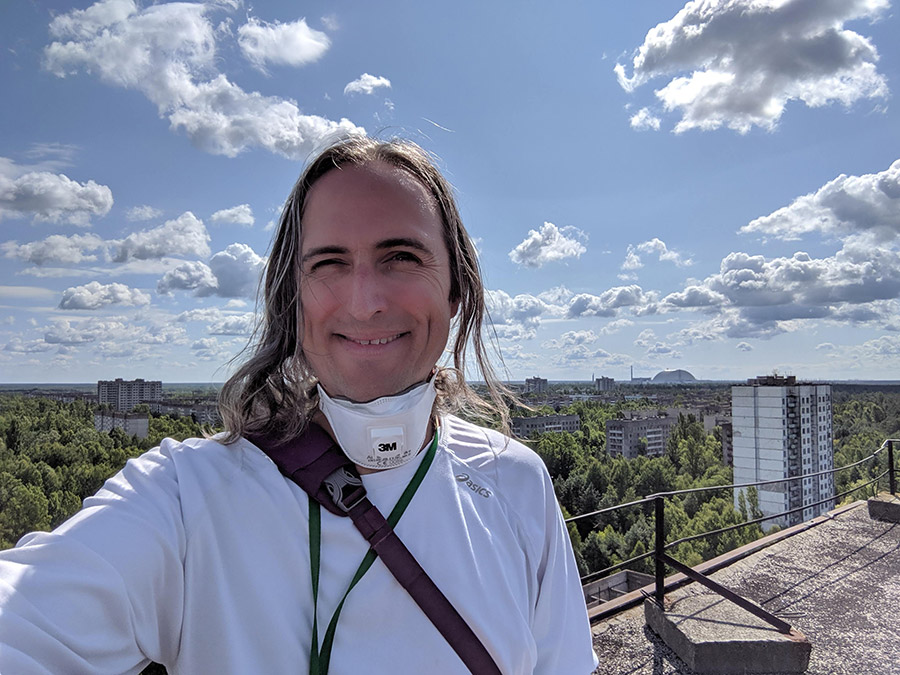
One of the things that really struck me up on that roof was seeing the way nature had reclaimed an entire city, and realizing that trees don’t naturally leave a halo of empty space around buildings. We create this. It was visually perplexing to see trees growing right up alongside buildings, and towers springing straight up out of the woods.
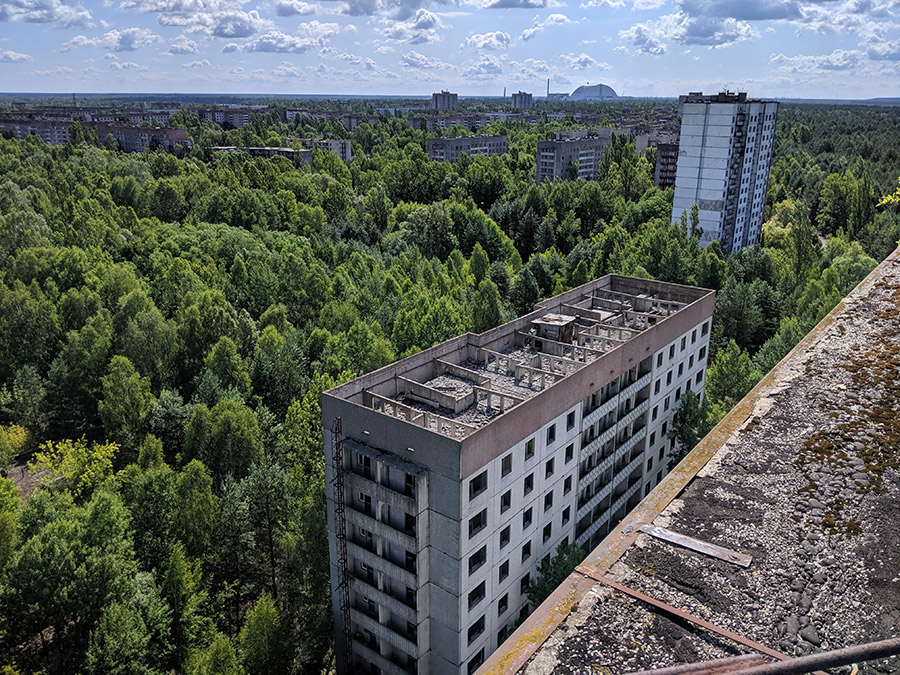
You’re technically not allowed to enter any of the buildings in the Exclusion Zone, a law that every single tour group breaks with great regularity. There are supposedly patrols looking to catch people sneaking in, which wins you a one-way ticket out of the zone, so our excursions into the buildings were done as quietly as possible, not speaking and attempting to move quietly in spite of the fact that you were walking on top of broken glass literally your entire time inside every building. This would have been a hilariously tragic trip to wear flip flops.
The highlight of Pripyat for me was the elementary school, which was a huge, surreal maze consisting of multiple floors. I actually got so deep into this labyrinth that the guide had to come in looking for me after the rest of the group was ready to leave. I have no idea how long I was in there.

The various rooms were a poignant blend of abandoned toys, books and overturned furniture. Creepy dolls abounded, some having been posed for photographic purposes by previous explorers.
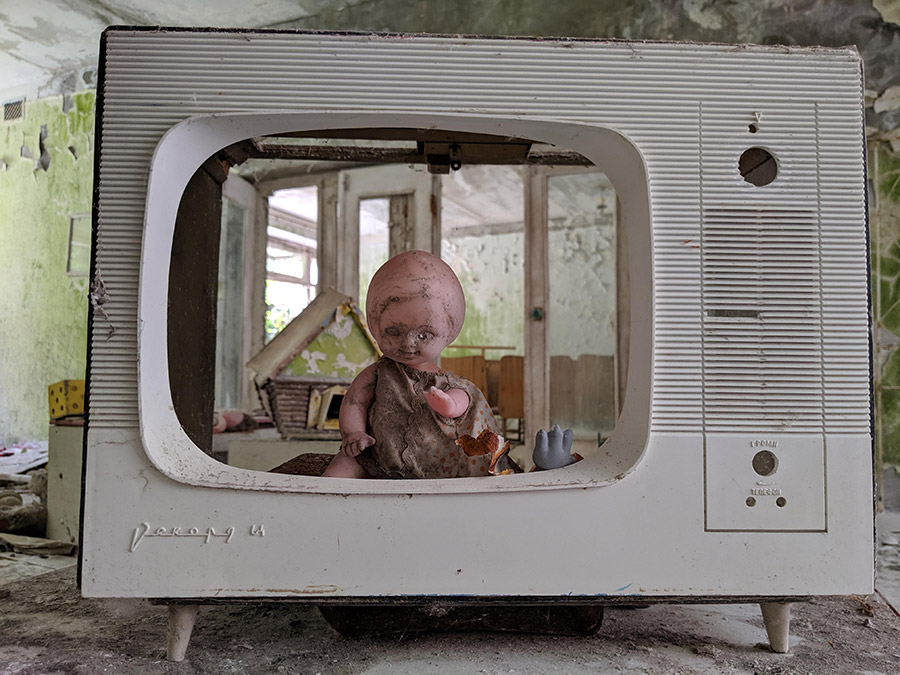
I was in weird shit heaven. This place was like a theme park for fans of The Walking Dead or whatever post-apocalyptic story suits your fancy.
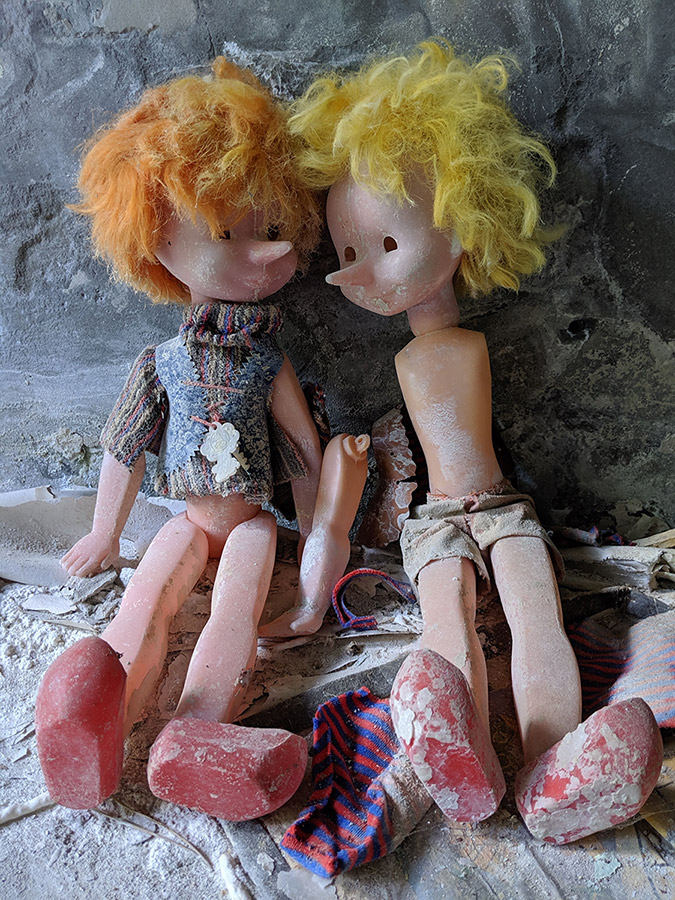
At one point I was climbing over several warped, collapsed bookcases that were strewn across the floor, blocking my entry into a room I wanted to check out. Surfing across the chaotic debris, I briefly scraped my shin on a rusty hospital bed frame. I laughed as I realized this was quite possibly the worst place in the world to scrape your leg. Hopefully the radiation and the tetanus bacteria kill off whatever other germs are lurking in here.
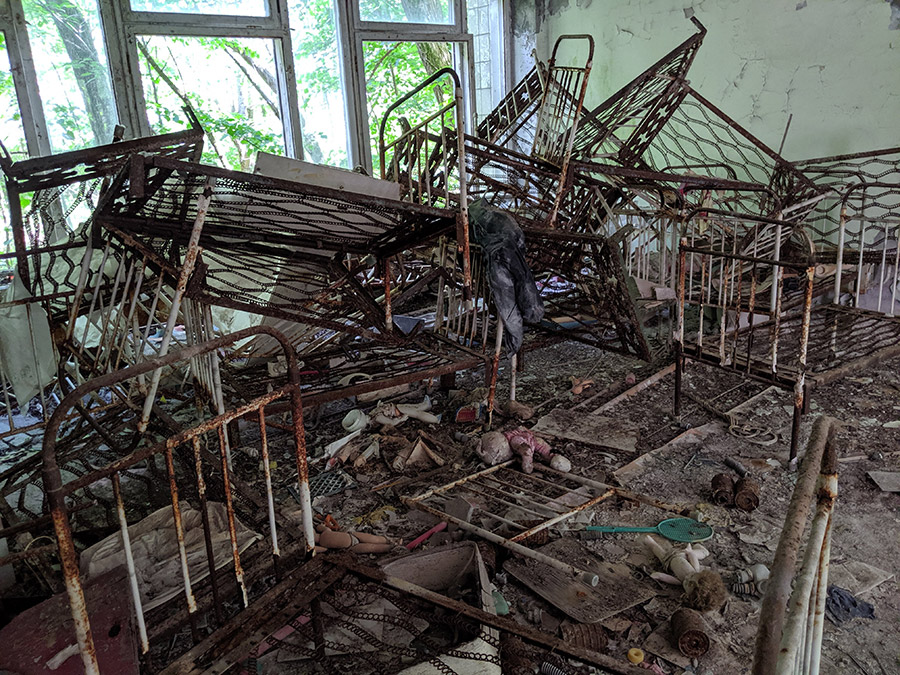
The rooms were all a weird mix of everyday scenes abandoned on a moment’s notice, and the aftereffects of 30 years of random looting.
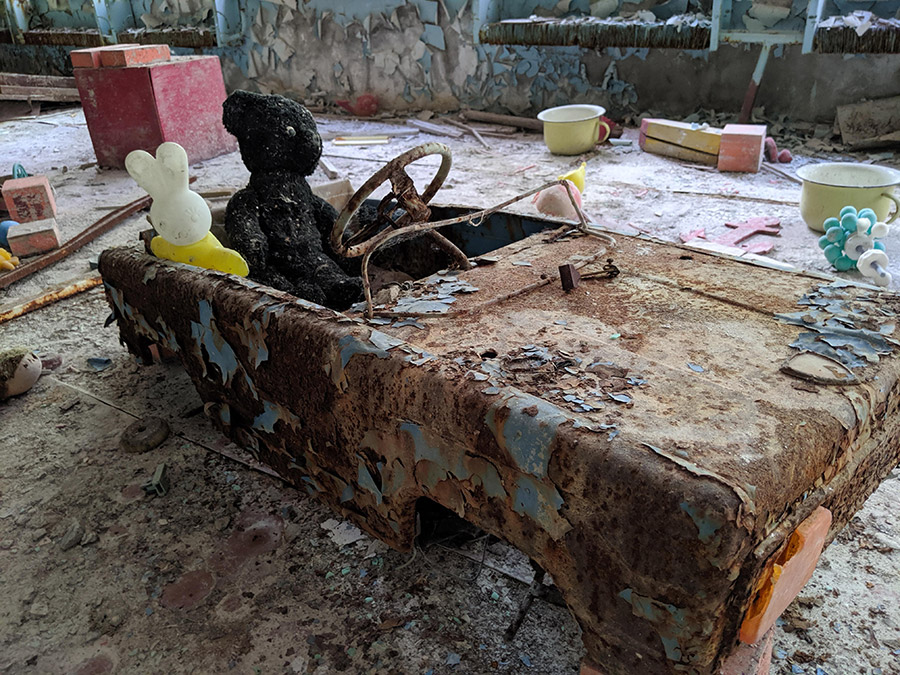
Everywhere, nature was violently reclaiming this space.
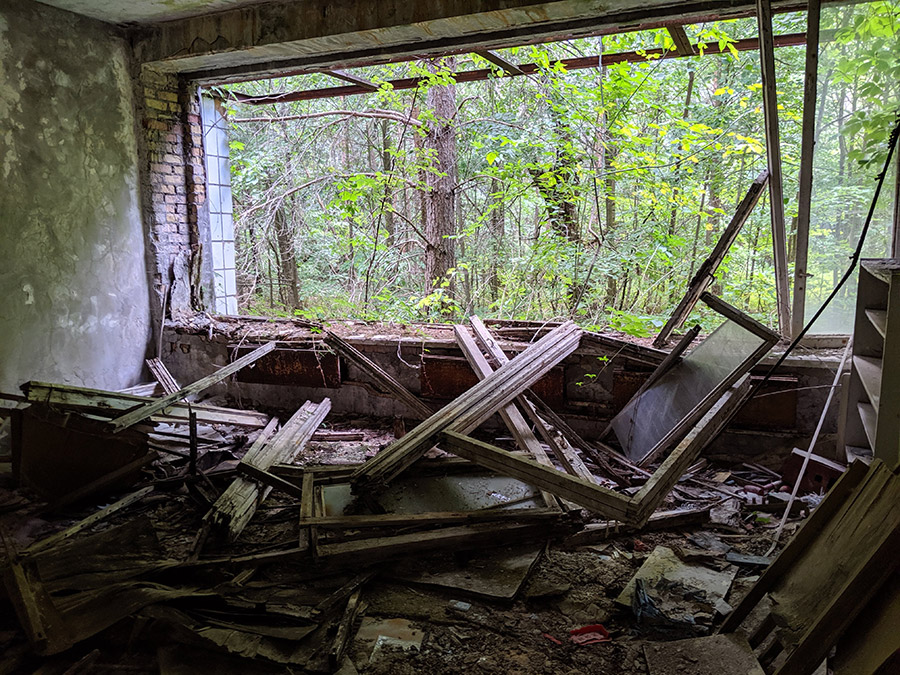
I was deeply fascinated by the little coat hooks in each classroom, each child’s space marked with a small avatar.

I was equally and strangely touched by the tiny toilets in all the bathrooms. The decomposing reality all around me was at once sad and beautiful, strange glimmers of the life that came before shining through in random places.


The second highlight was unquestionably the amusement park. Set to open days after the nuclear disaster occurred, the park sits unused and abandoned for all time.
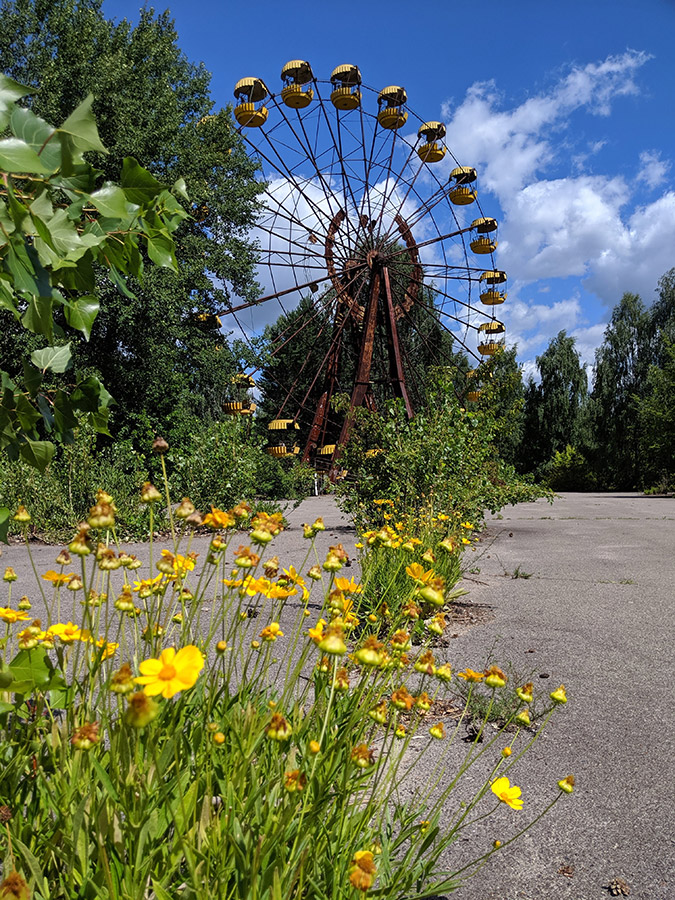

The highest radiation levels we saw during the entire trip were on the cars of the Ferris Wheel, sending the Geiger counters into fits, the screens displaying radiation levels hundreds of times what we’d seen anywhere else, numbers only approached by that fireman’s hat dropped in the hospital doorway.

Not ten seconds after this display of metal’s amazing capacity to jealously hold onto radiation, several of the 20-year-olds in our group were taking photos of each other sitting in the park’s bumper cars. That’s… wow. Maybe better if you guys can’t have kids.


Some of the graffiti in Pripyat was beautiful.

And some of it was just completely baffling and hilarious.
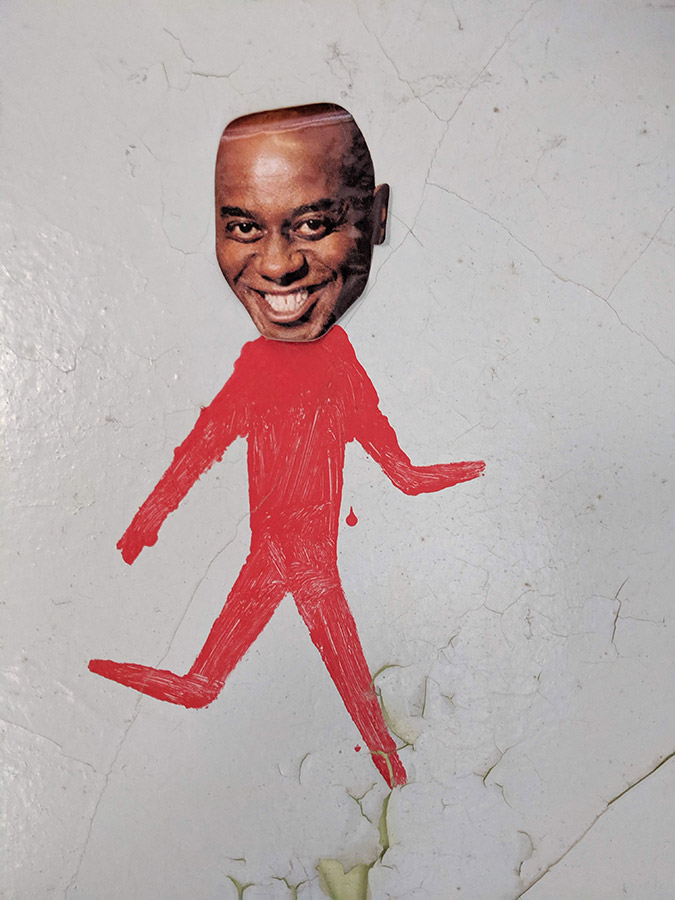
I was moved by the many small ways that nature was emerging through the cracks of the formerly manmade world.

We wandered through countless other buildings as we explored the city. My hardest laugh came while trying to make my way through this sea of circuit boards and machine parts, which covered the floor of some kind of factory several feet deep, leading to an absurd sliding, surfing locomotion like Scrooge McDuck in his vault.
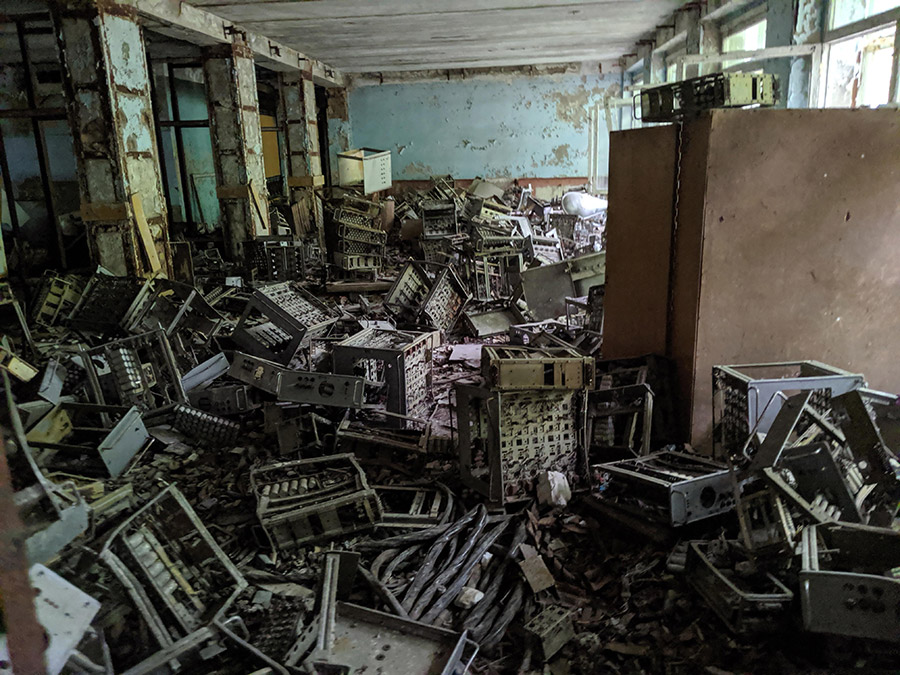
The grocery store was a fascinating mess. Pripyat was a desirable place to live and work, with well-stocked stores that seldom suffered from the shortages and poor selection common in stores in other parts of the Soviet Union.

Everywhere, beauty intermixed with the chaos.
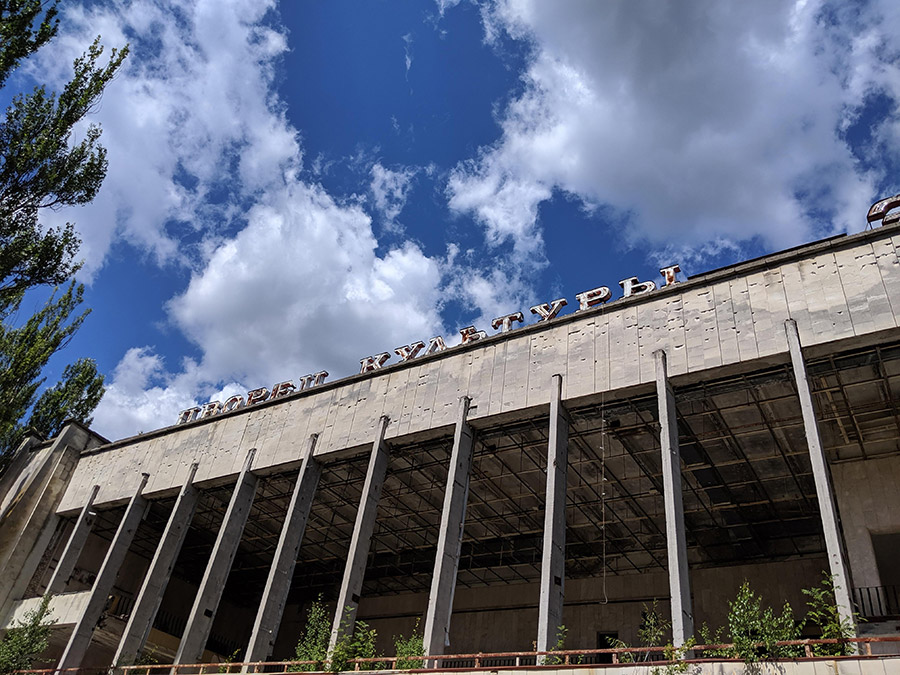
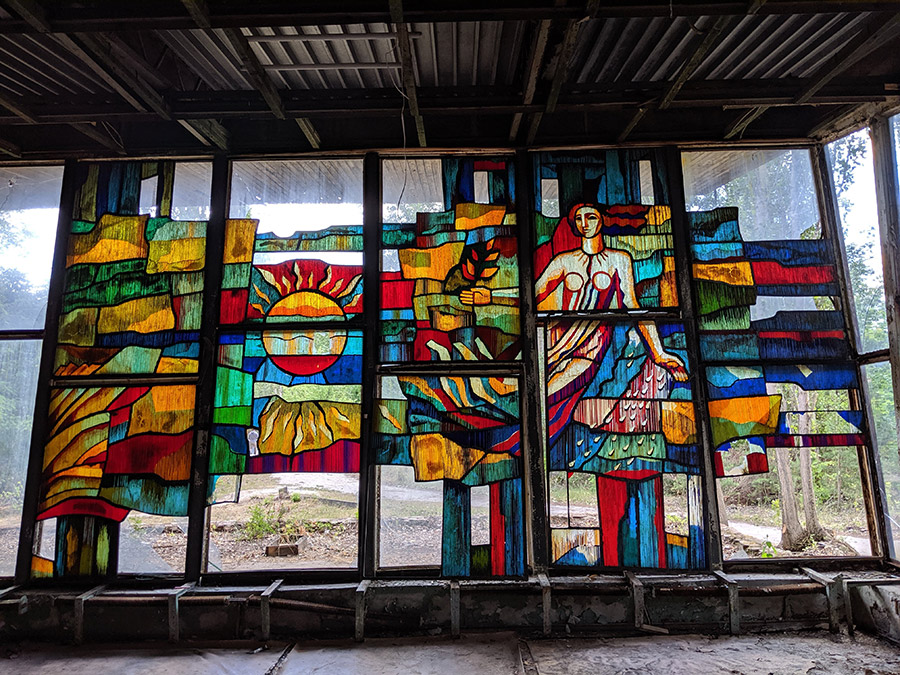
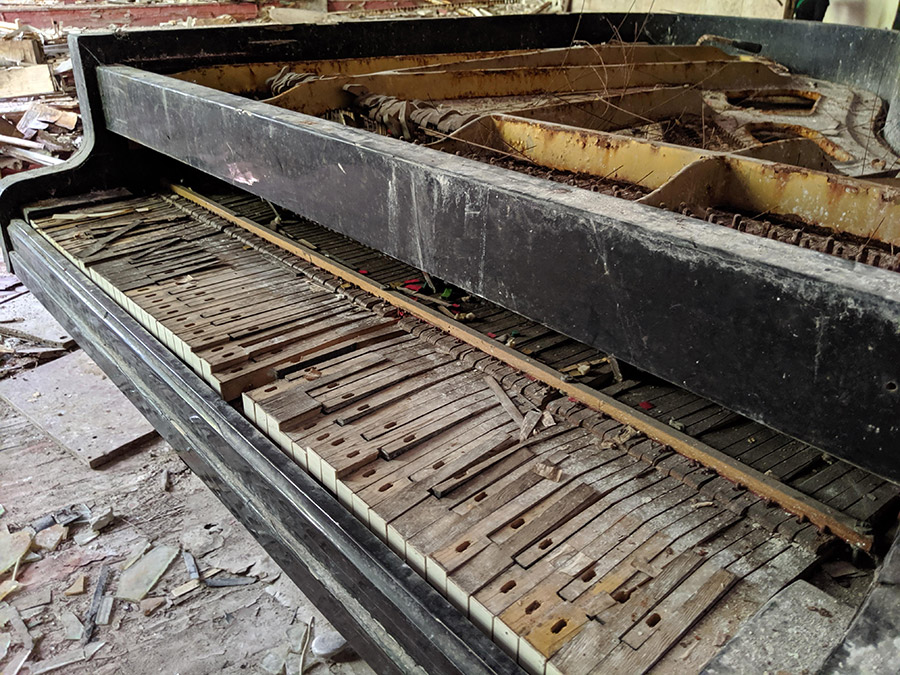

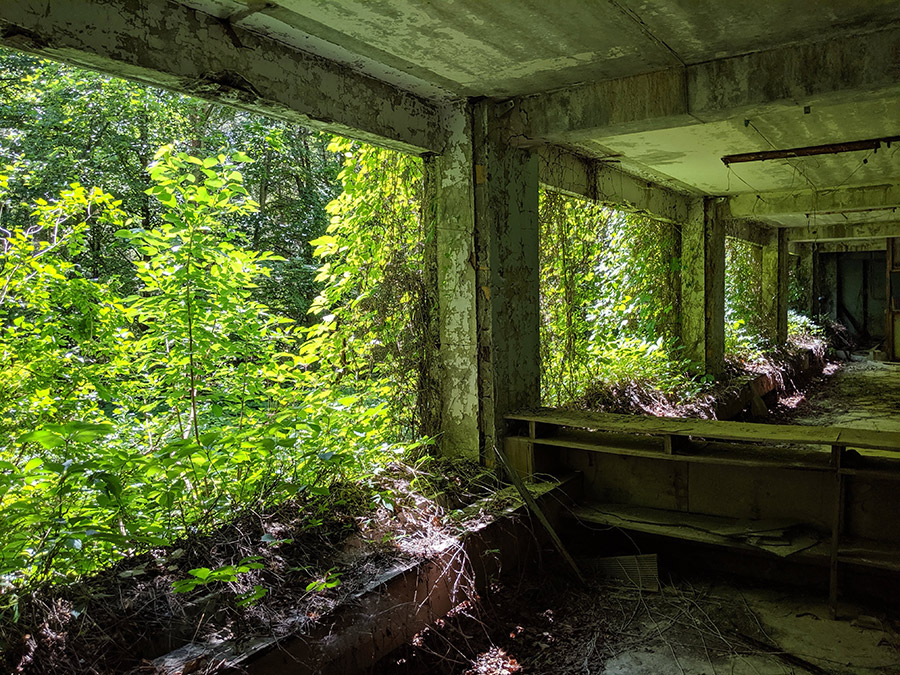
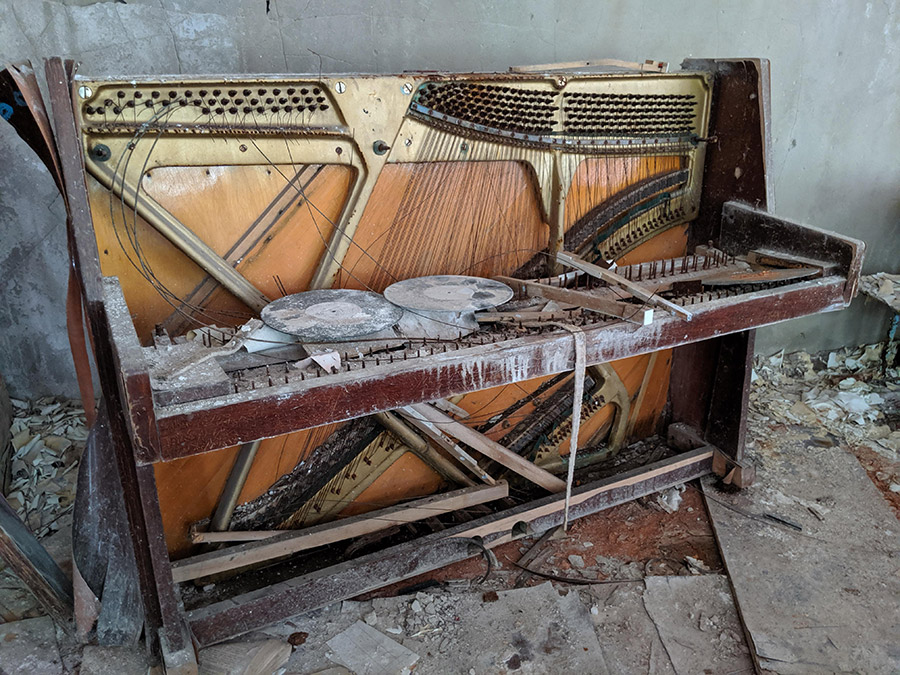



We entered several dark buildings lit only by the occasional breaches in the ceiling torn by the rains. Inside a pitch-black movie theater I poked around upstairs until I found the projector room.
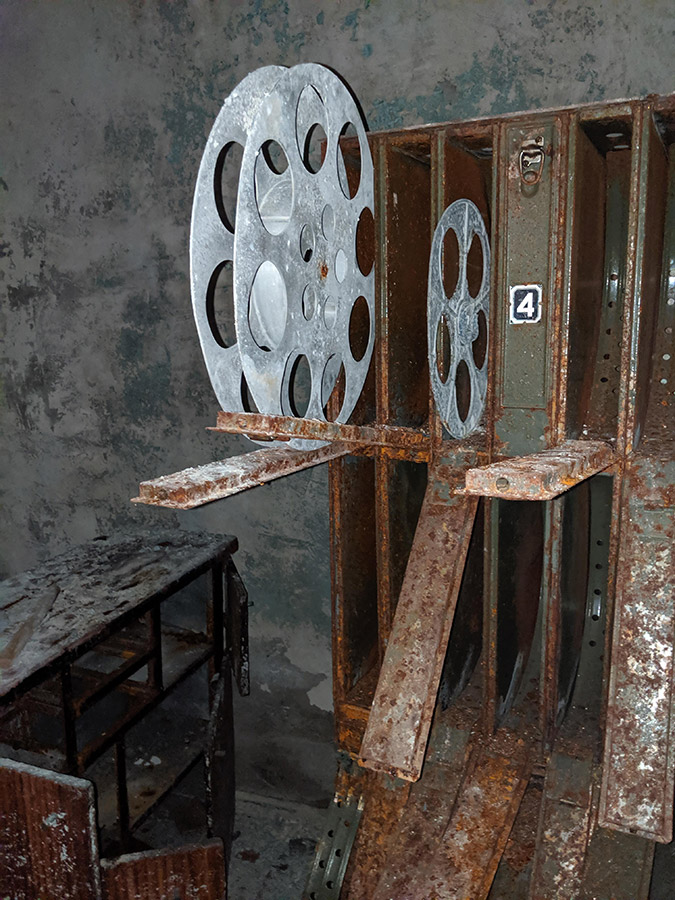
Nearly the equal of the elementary school was the high school.

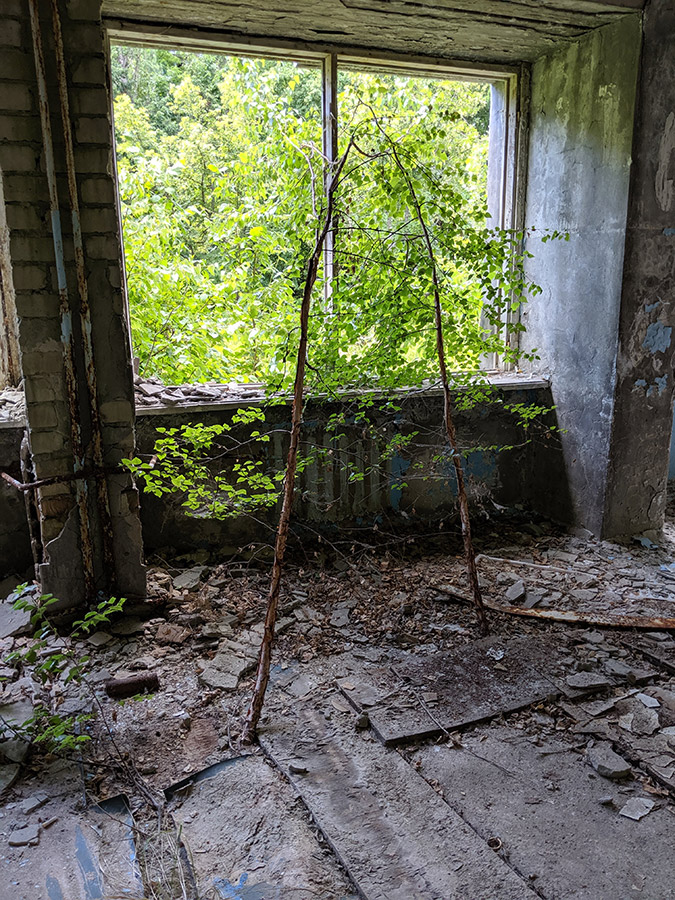
In several back rooms of the high school we were literally walking on 3 feet deep of books that carpeted the floor from wall to wall.

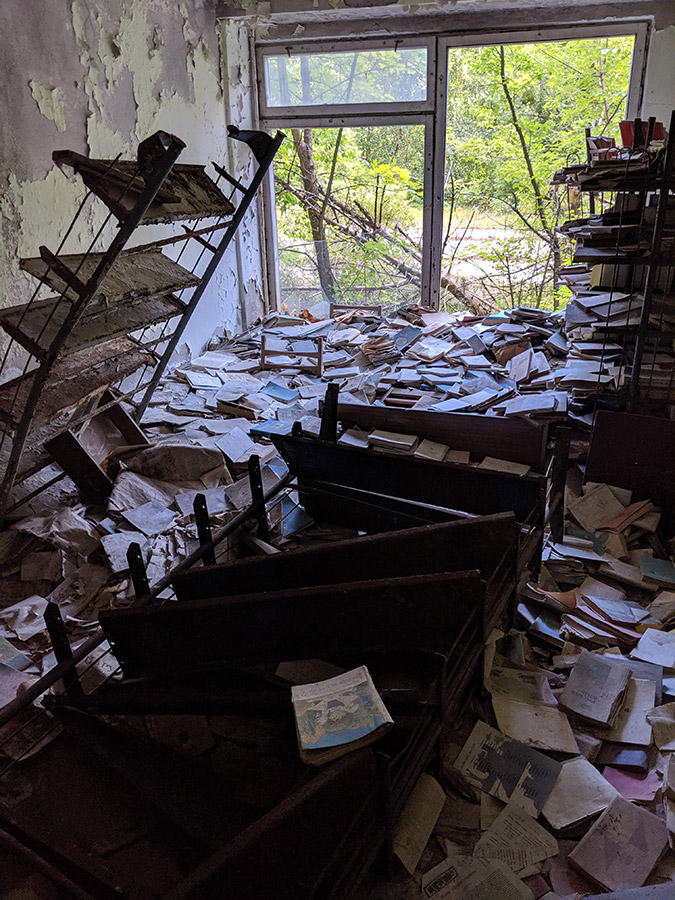
All the yellowed newspapers on the floor and the desks were fittingly from April of 1986.
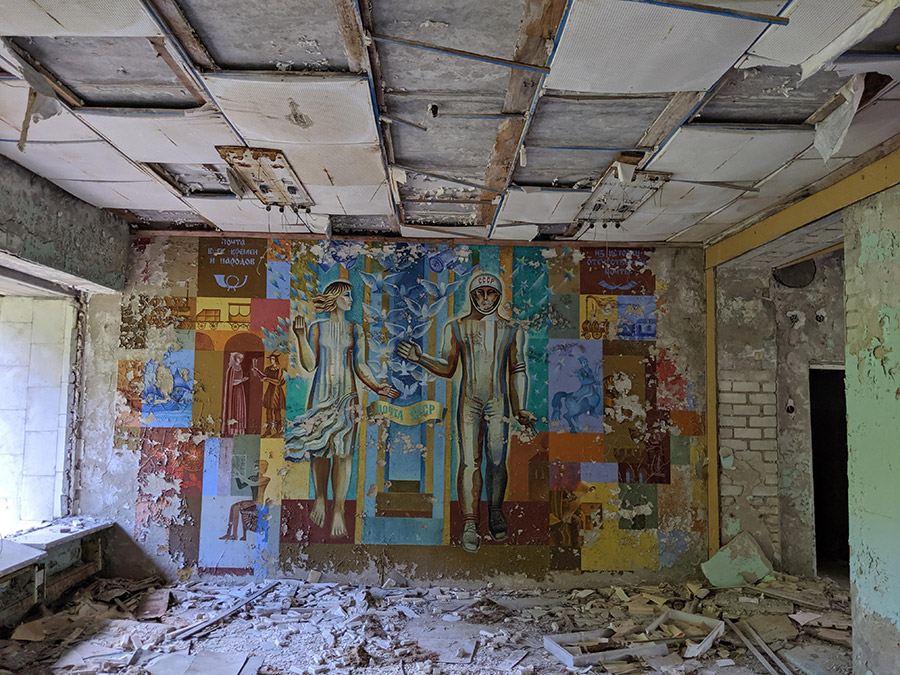

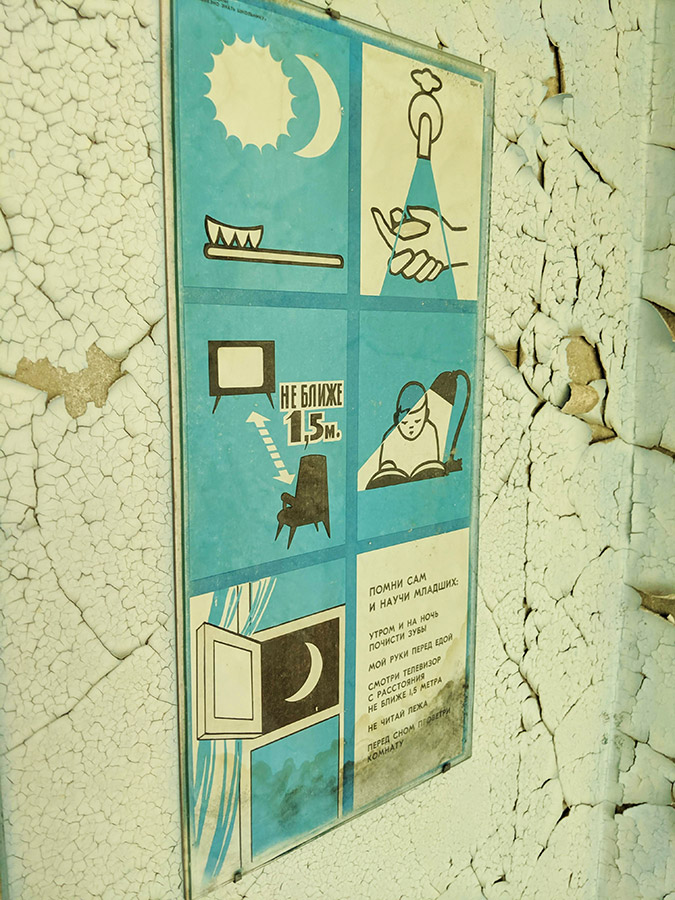


At times it feels like Pripyat must have been sanitized somewhat to make it safe for tourists, then you step onto a floor that sags and bends beneath you like you’re walking on wet cardboard, and you realize there’s at least a decent chance of you falling through to whatever’s underneath.

Deep in the woods near Chernobyl sat one of the USSRs most Top Secret projects, known as Duga 1.
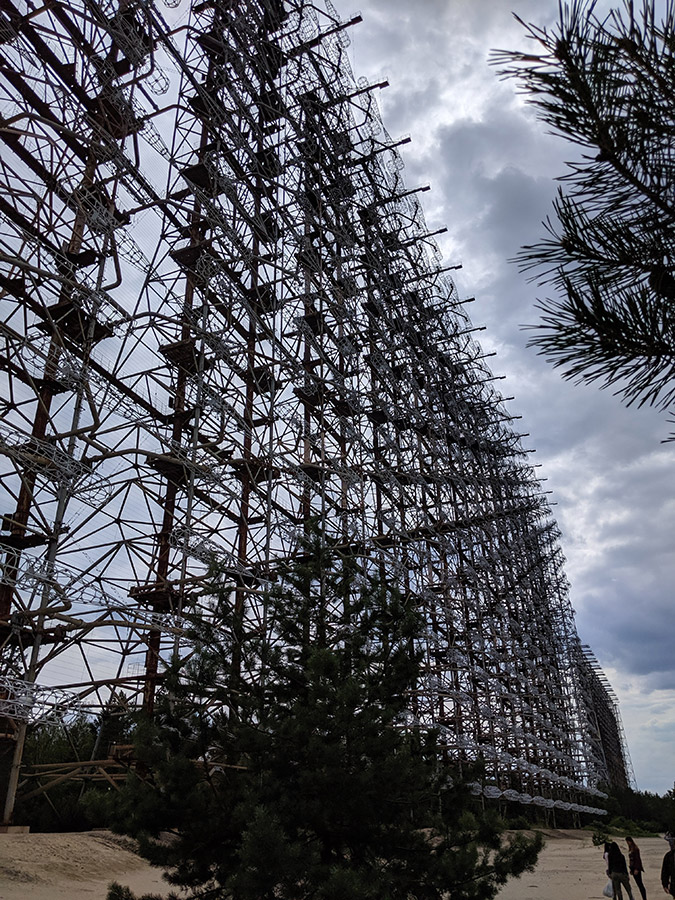
The first thing that’s funny about Duga 1 is that the Russians somehow thought they were going to keep its existence a secret in spite of it being freaking gigantic and standing out of the flat landscape like a billboard from outer space. I’m pretty sure within minutes of its completion, the Americans had spy plane pictures of it.
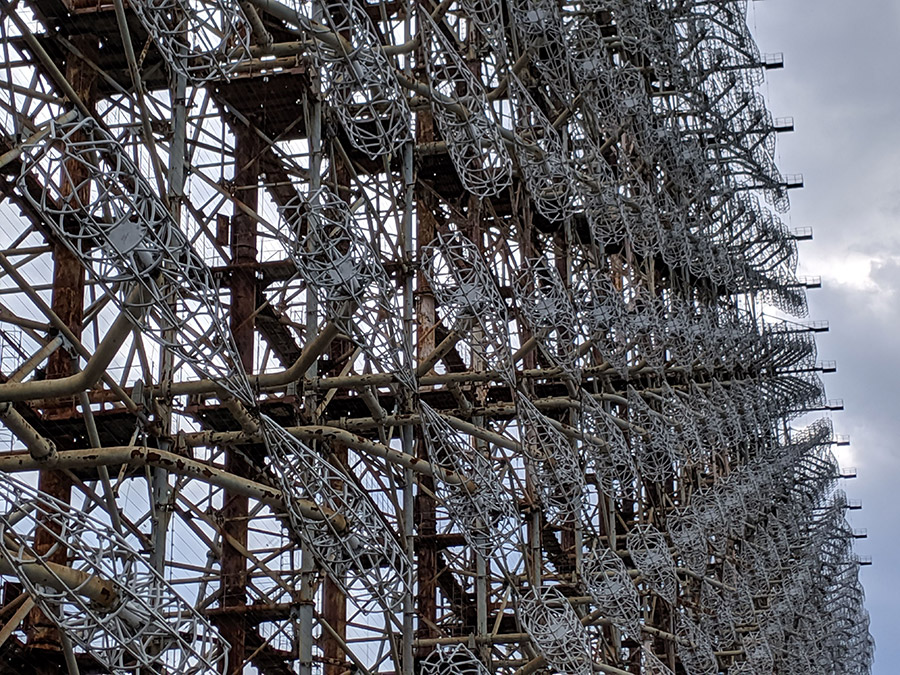
But what was it? Early theories suggested it was some kind of mass mind-control device. Others imagined some kind of weather control technology. A few lonely souls theorized the Russians were trying to pick up Cinemax.
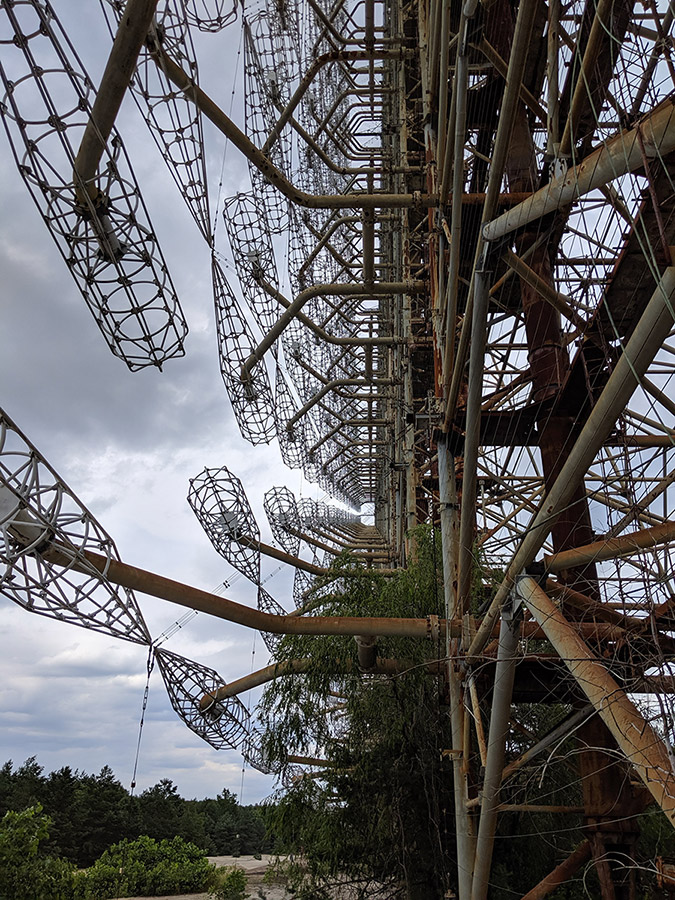
Beginning in 1976, ham radio enthusiasts in the US and around the world began to pick up a strange rhythmic tapping sound at 10 Hz, which became known as the Russian Woodpecker. The signal interfered with commercial broadcasts and ocean navigation to such an extent that new equipment had to be produced that filtered out the Russian signal.
It was deeply fascinating to wander around in a place where you would have been shot on sight in the 1980s. The Soviets disguised the roads leading to Duga 1 and set up fake bus stops for a non-existent village to explain the comings and goings in the area.
The scene was made even more surreal but a couple of Instagram models wandering around and taking selfies in faux military uniforms, beneath the structure. Thanks 2019.
Looking up at Duga 1, it appeared to be a giant antenna, which is exactly what it was.
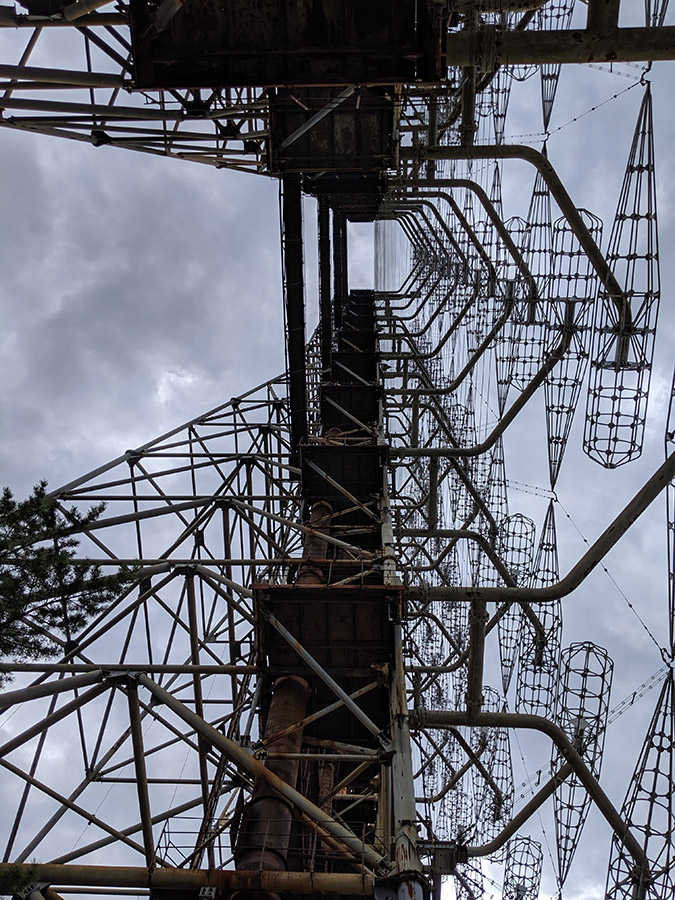
Walking through the nearby control base for Duga 1 was even more surreal. Inside the classroom that was used to train soldiers to run the facility, it became clear that Duga was the receiving end of a massive long-range “Over the Horizon” radar the Soviets were using as an early warning system for any intercontinental missiles coming from the US.
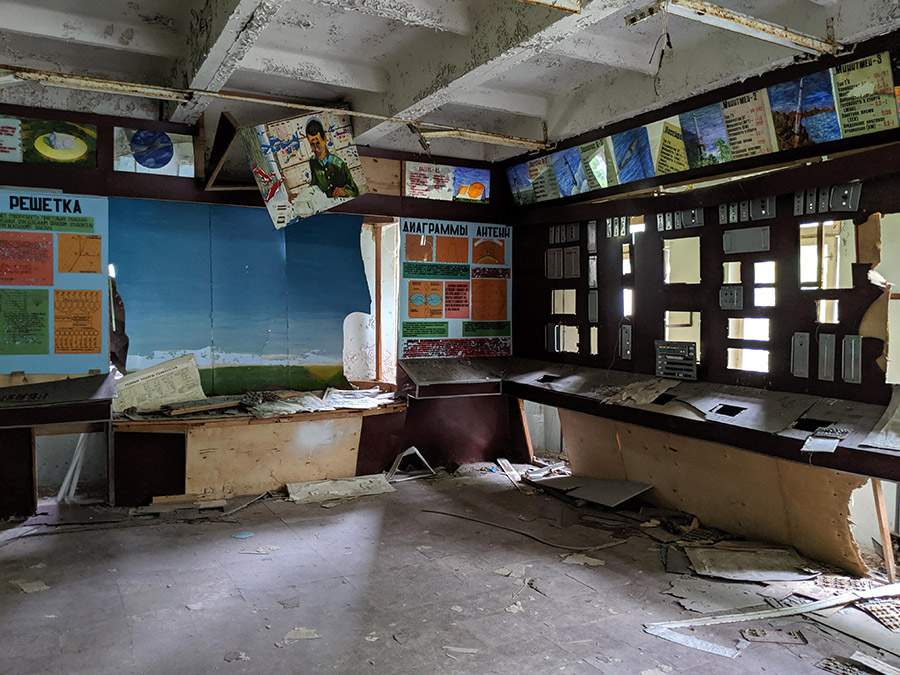
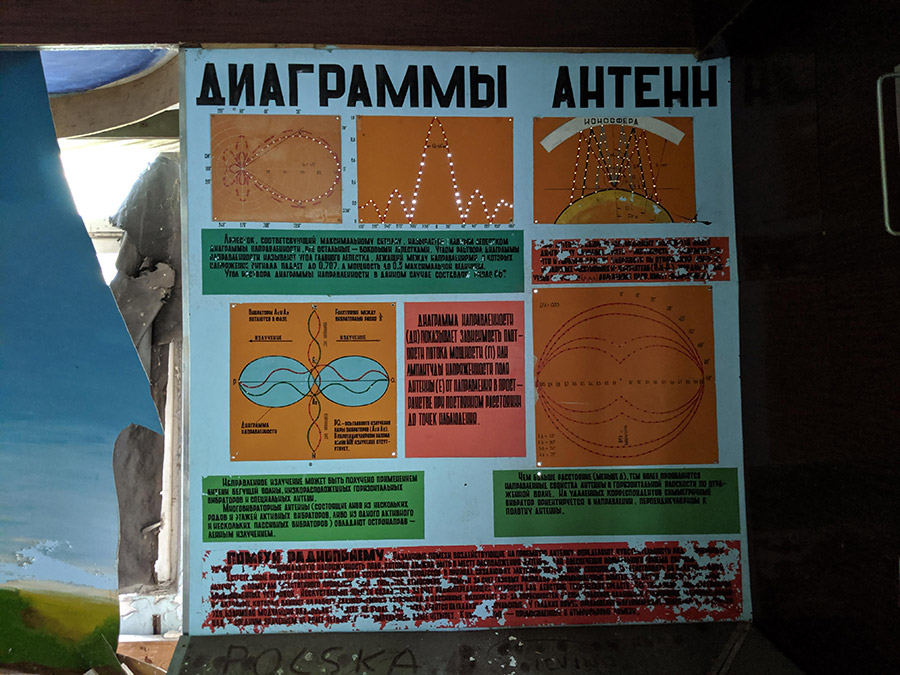
Seeing all of this was both fascinating and kind of funny. In spite of the crazy hoops the Soviets were jumping through to maintain this huge secret, those amateur radio hobbyists around the world had not only figured out that the signal was an Over the Horizon radio system, but had triangulated the positions of both the transmitter and the receiver to what turned out to be a high degree of accuracy.
Looking around the control room and the training facility, it was disorienting to reflect back on my childhood during the Cold War in the late 70s and 80s. The Russians were our brilliant, unstoppable foe, and it was only a matter of time before they were going to nuke us all. Looking around the room, the whole operation was held together with spit and bailing wire. The control panels looked like something from the 1940s.
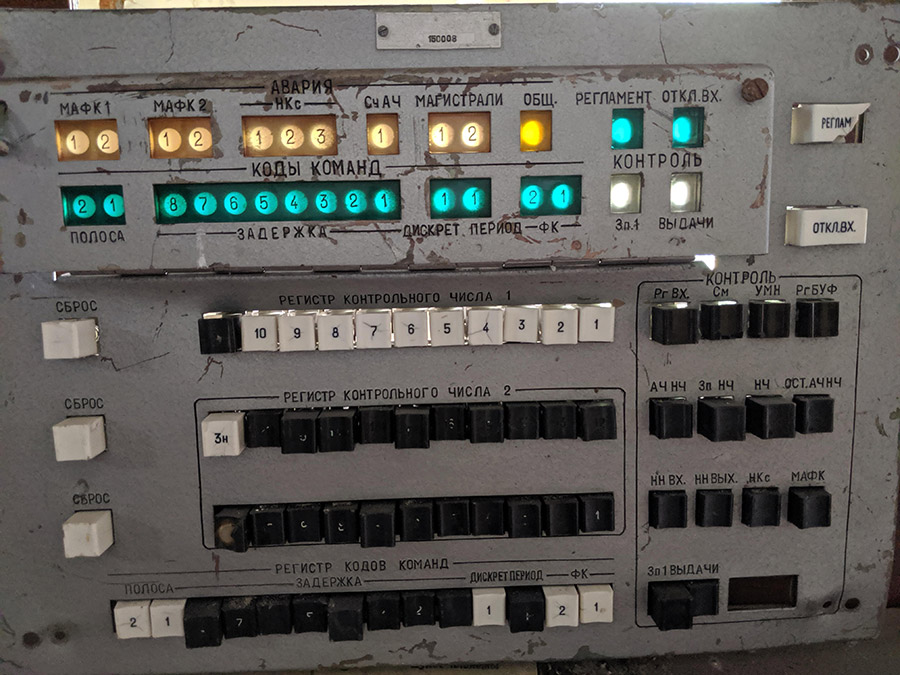
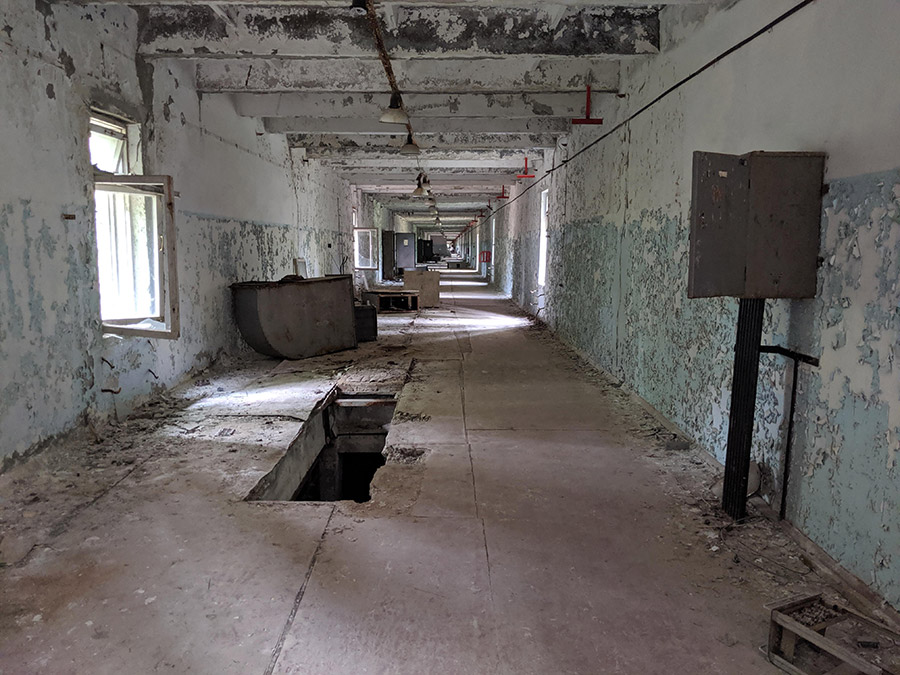
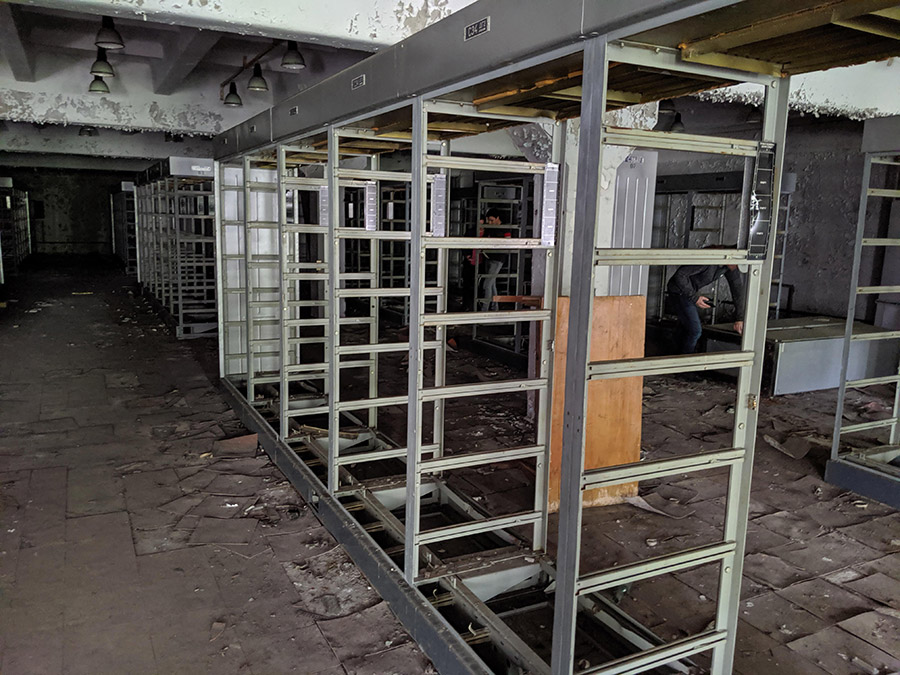
There’s something deeply humanizing about seeing your former “enemy’s” secrets laid bare, to walk through their secret bases as well as their elementary schools. Seeing things as they truly were rather than how they were presented. It was strikingly poignant to reflect on their frailties and failings, their fears, their humanity, and to consider the machine that made us think of them as something different from us.
Nearby there was a fire station dedicated to the Duga facility, which featured an adorable model of Duga 1 inside.
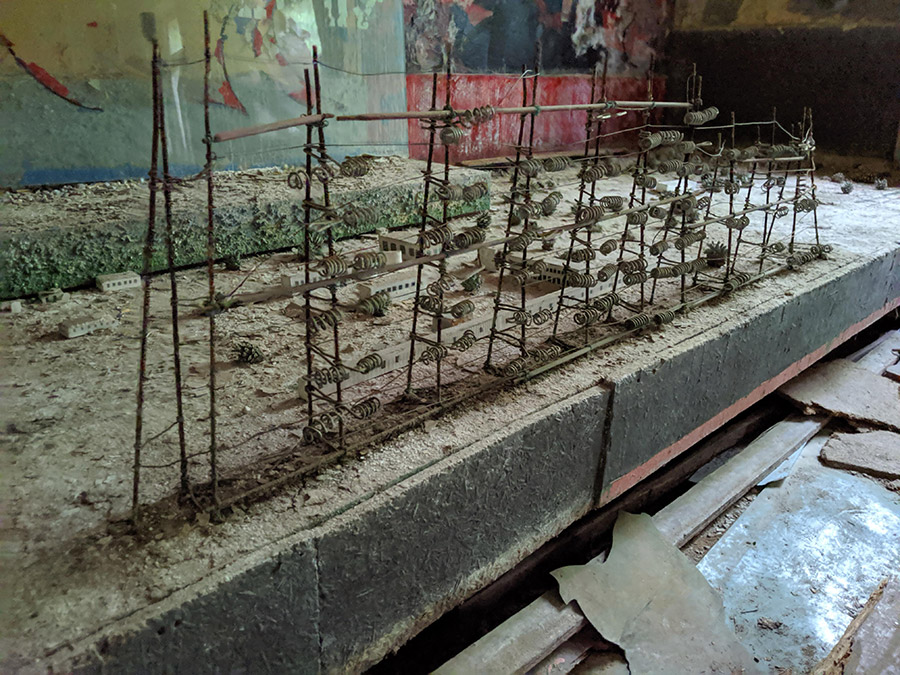
Within the Exclusion Zone there is a monument to all of the villages that were evacuated following the disaster, effectively wiping them off the map forever.
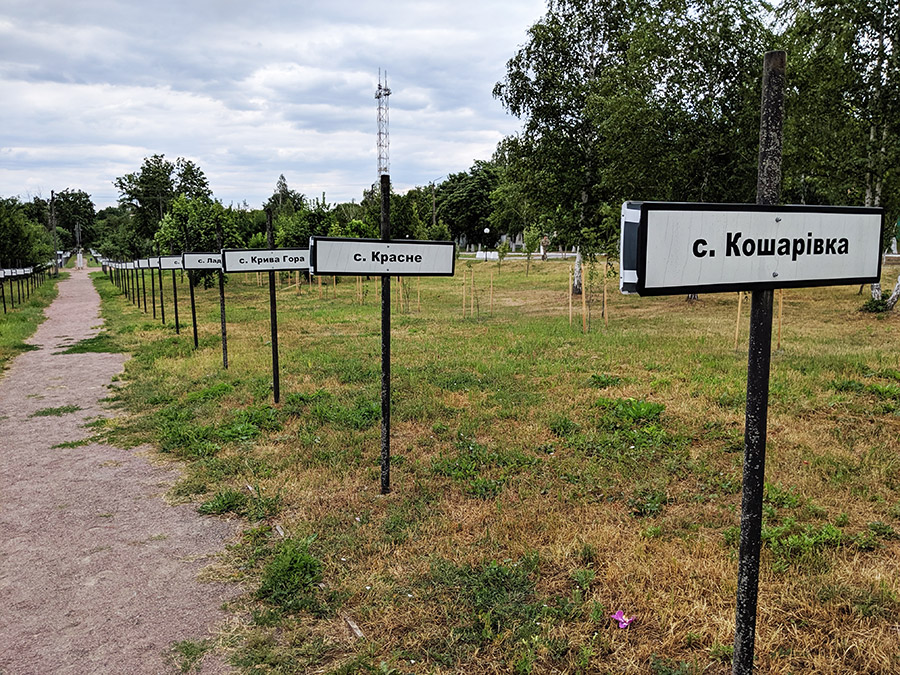
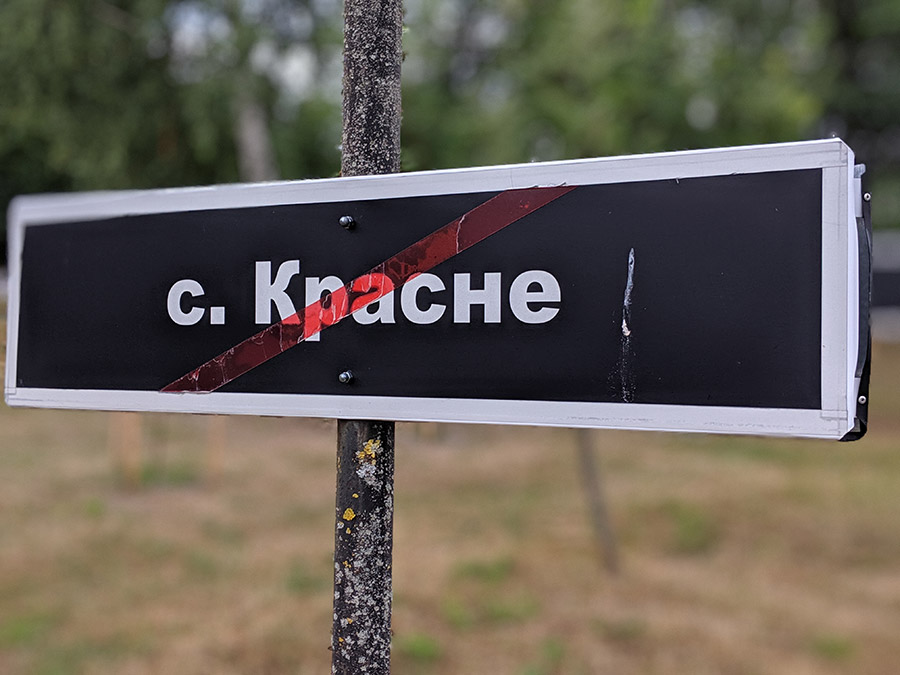
We visited one of these villages and explored some of the small cottages being slowly consumed by the forest.
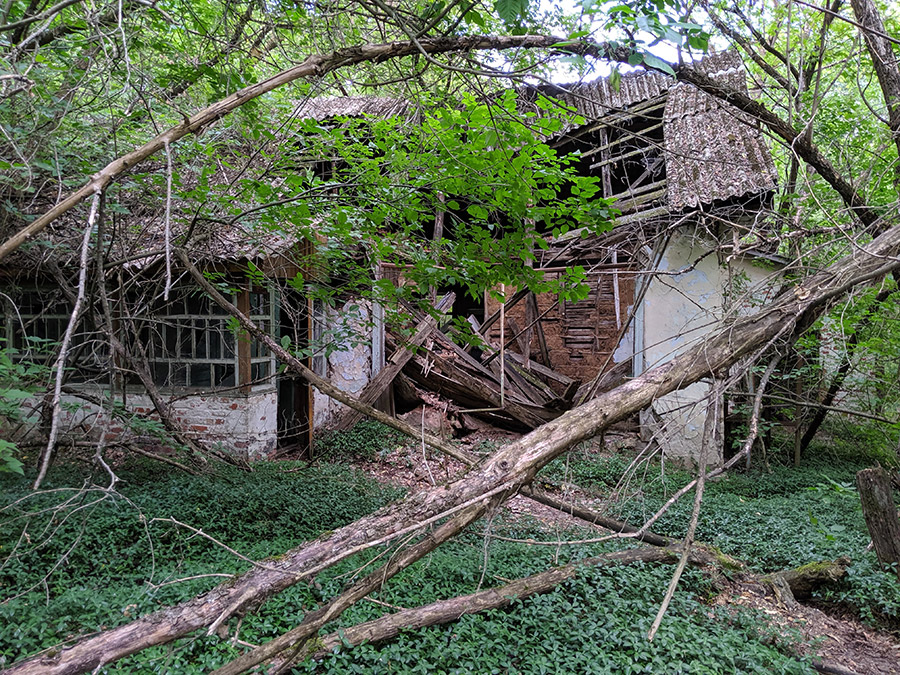
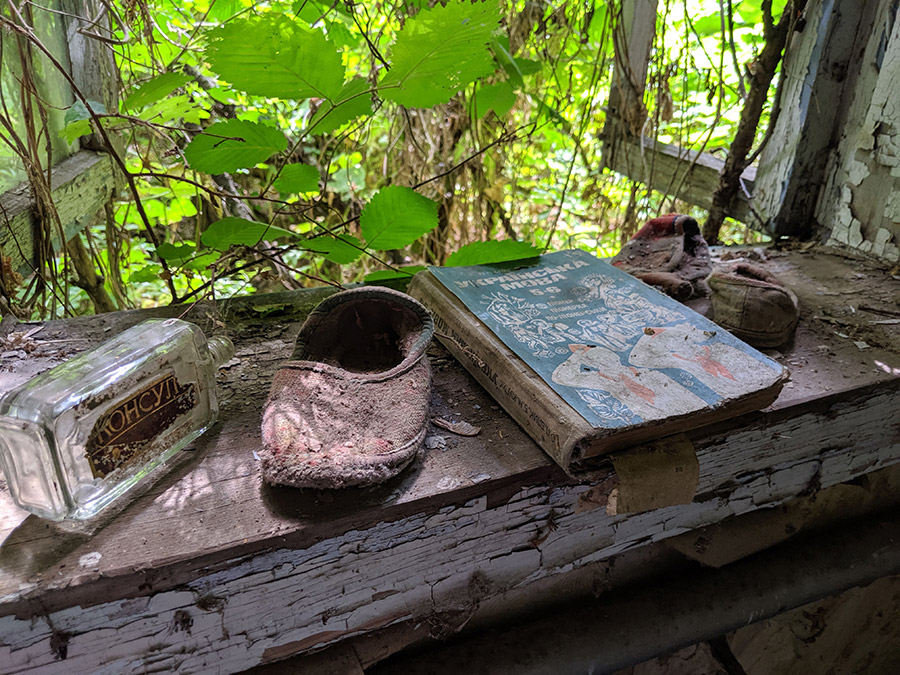


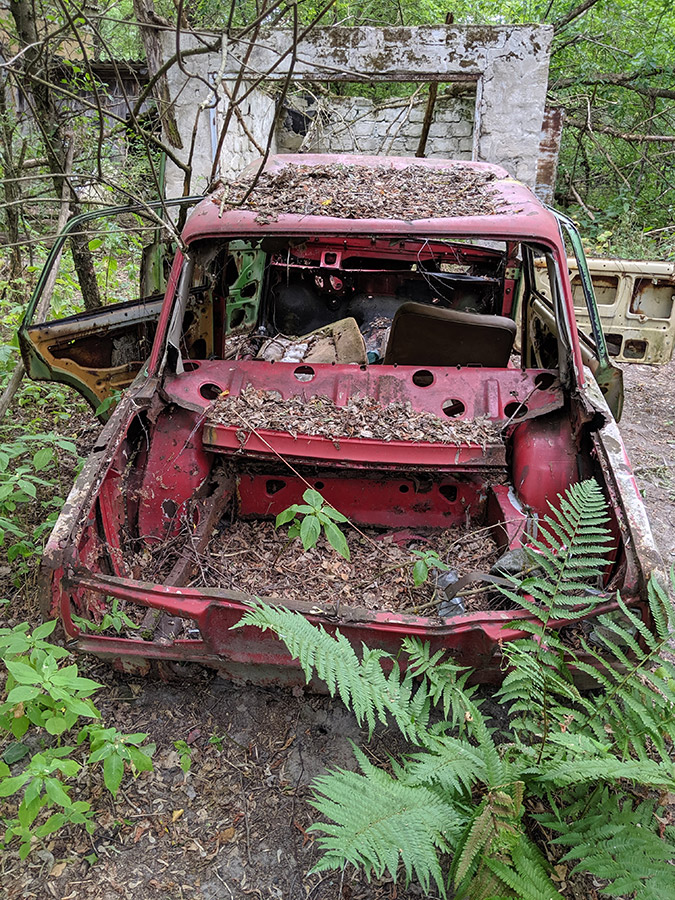
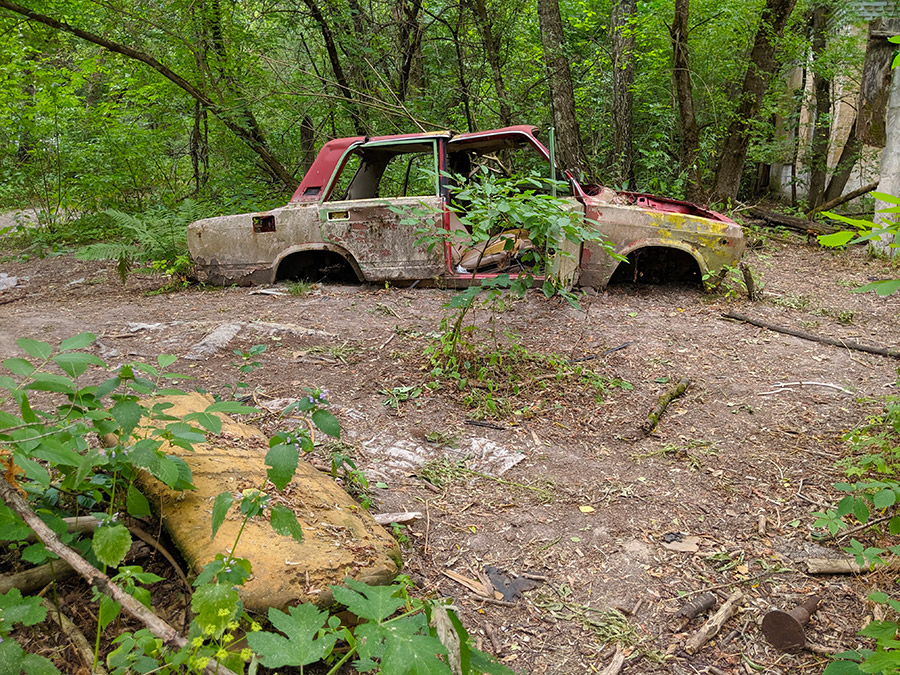
The cheerful sign welcoming you to Chernobyl just seems eerie now.
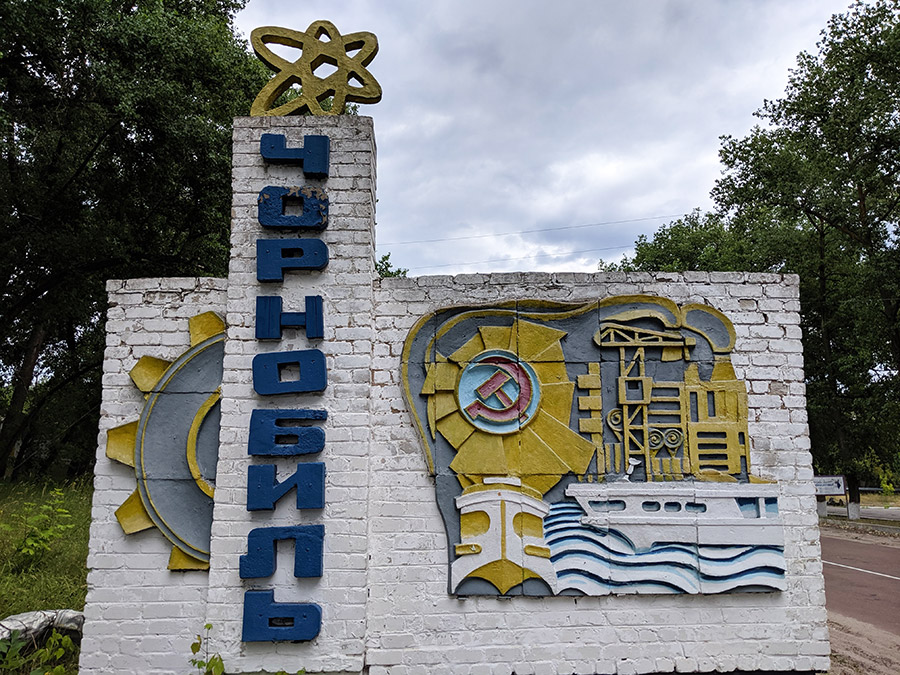
Just as striking is the monument in front of the fire station, dedicated to the firefighters, soldiers and liquidators who responded to the power plant explosion.

The crude nature of the statues, made spontaneously by locals to honor the men who gave their lives, makes the monument even more touching. A plaque at the base dedicates the memorial “To Those Who Saved The World,” which normally would sound grandiose but in this case seems pretty accurate.
In the woods nearby we walked past this extremely bizarre child-sized Ferris Wheel, which definitely 100% killed some kids at some point. One of the seats was strewn over a log some distance from the rest of the structure. We all immediately agreed that this was how they introduced children to the concept of Russian Roulette.
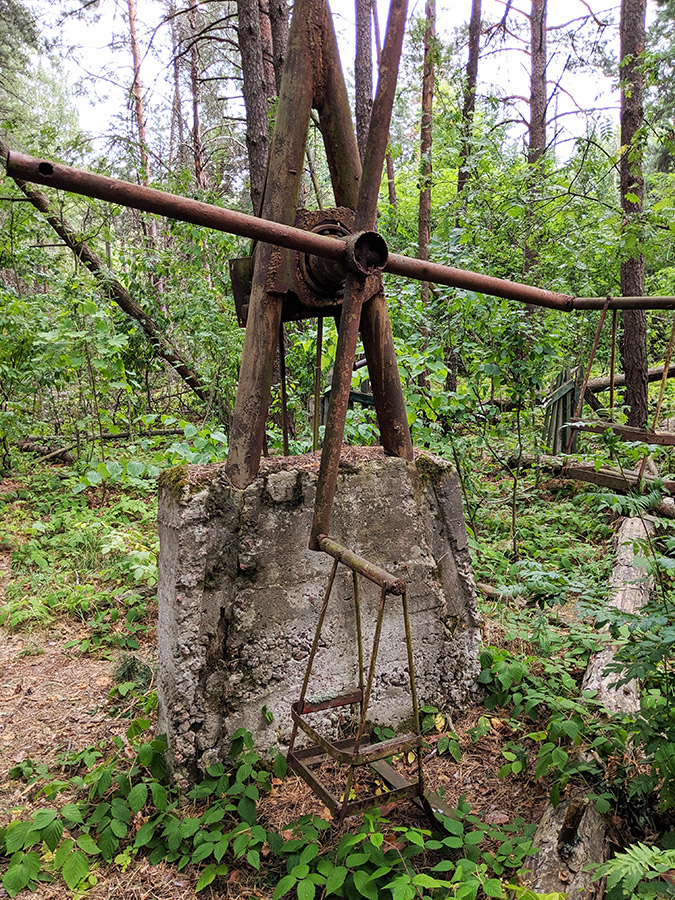
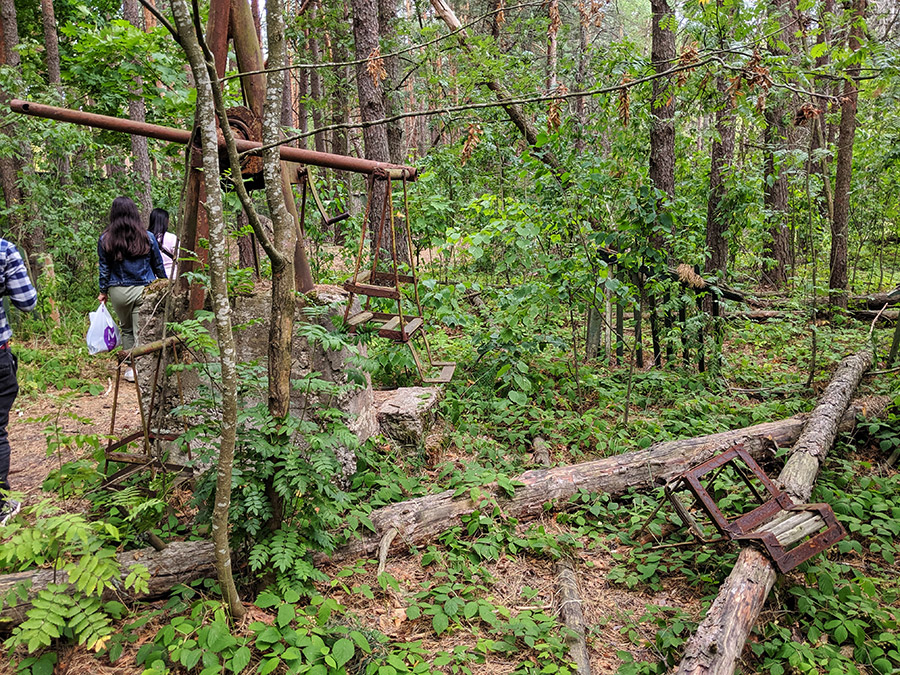
Every time we exited the central 10 kilometer section of the Exclusion Zone, we had to pass through radiation-detecting machines, which did their work so quickly most of us were convinced they did nothing at all.
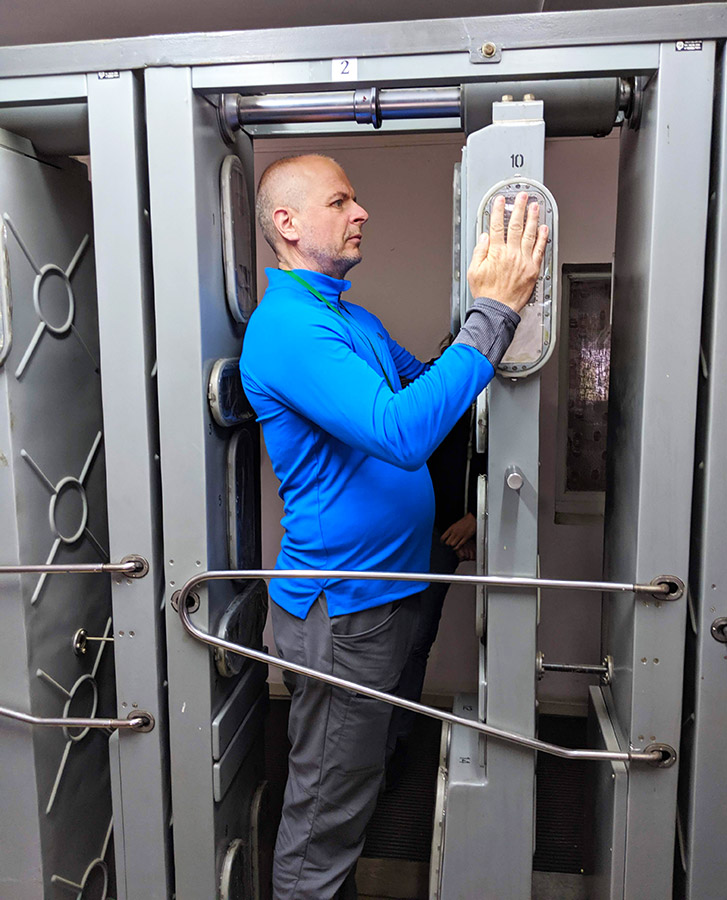
This fit with a general theme, in that one of the guys on my tour had brought an expensive Geiger counter from home which always seemed to be registering radiation levels about twice what our little yellow toy models said. Hmmm.
Getting into the Exclusion Zone involved waiting for hours in a line of cars at the first checkpoint, the crowd driven by the spiking popularity of Chernobyl as a travel destination thanks to the recent HBO miniseries. Once we finally got in, we were given lanyards to wear around our necks at all times, each one holding a small dosimeter that looked like a USB thumb drive and that was meant to monitor our total radiation exposure while we were in the zone. As each lanyard was scanned and very officially linked to our entrance ticket, we were heavily warned that we would be charged $250 if we lost one of these high tech pieces of equipment.
On the second day of the trip, one of the guys purposdentally broke his dosimeter open while fucking around with it while he was bored, and all that was inside the metal casing was a simple piece of plastic. Maybe this was alien technology too advanced for our feeble minds understand, but it sure looked like a placebo to me. Hmmm.
The company that is currently handling the hazardous waste management at the Chernobyl plant is called Nukem. Hmmm. Maybe the Ukrainians just have a really good sense of humor?
Then there’s the fact that they kept the other reactors at Chernobyl going until the rest of the world forced Ukraine to shut them down in 2000. Yep, while all of this was going on, all the aerial sand dumping, the miners on a suicide mission and the desperate sarcophagus building over reactor 4, people were reporting to work at reactors 1-3 in essentially the same building, every day. Reactor 2 shut down in 1991 after being gutted by a fire. International pressure finally shut down reactor 1 in 1996 and reactor 3 in 2000.
This is… wow. That’s crazy.
Knowing this made me a little less apt to push the boundaries with that “they wouldn’t let us do this if it wasn’t safe” attitude that some of the younger guys had. But I guess that’s what being 20 is for.
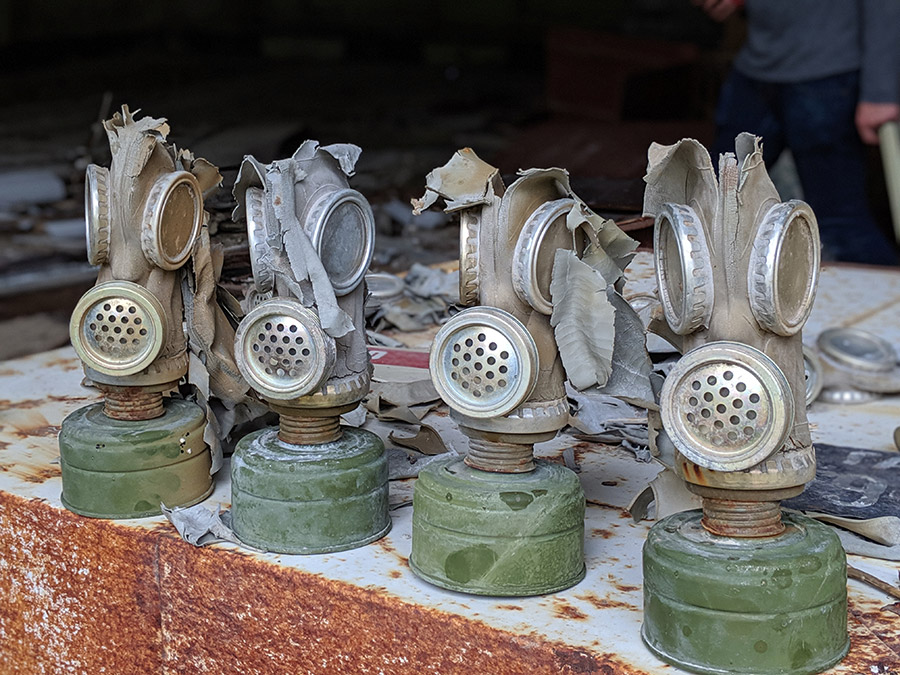
Reflecting on the entire story of Chernobyl, I was amazed by the sacrifices that tens of thousands of people made for the common good and for future generations. On the largest scale, yes, the USSR created the terrible problem they were then forced to solve, but those firefighters and soldiers who willingly sacrificed themselves to save others didn’t have any hand in creating it. They were just faced with an impossible choice and chose the highest good over their own interests, which I find humbling and inspiring.
Also, fuck the people and the system that made that choice necessary.
The sense I get from the whole thing is that this was the event that destroyed the Soviet Union. Both financially, as the containment of the disaster was unthinkably expensive for an already economically-challenged country, but also psychologically, for the way it shattered its own people’s belief in an infallible and benevolent Soviet Union.
Talking to people in Ukraine, I got a sense that even during the Soviet times, many people retained their previous national identities. They were Ukrainian first, Soviet second. They were a union of separate countries that Russia had conquered, which seems like a shaky foundation for long term unity.
Leaving the Exclusion Zone for the last time, I felt a strange mix of emotions. I was a little sad to go, in that this was one of the coolest and most interesting places I have ever visited. I expected to enjoy the visit, or else I wouldn’t have gone, but it was even more impressive and inspiring of deeper reflections than I had expected. And yet, obviously I couldn’t stay.
Also, Ukrainians totally don’t get veganism at all. My first dinner at the hotel was mushrooms in cream sauce served with mashed potatoes whipped in butter, and any hope I had of remedying this situation died with the realization that nobody there spoke any English at all. The second dinner was dumplings… filled with the leftover mashed potatoes. I had been living off of Oreos for two days and as awesome as that sounds my cells were deeply in need of food that was a third color.
“But Sean, isn’t there more to Ukraine than just Chernobyl?”
There sure is! Play us off, Kiev!
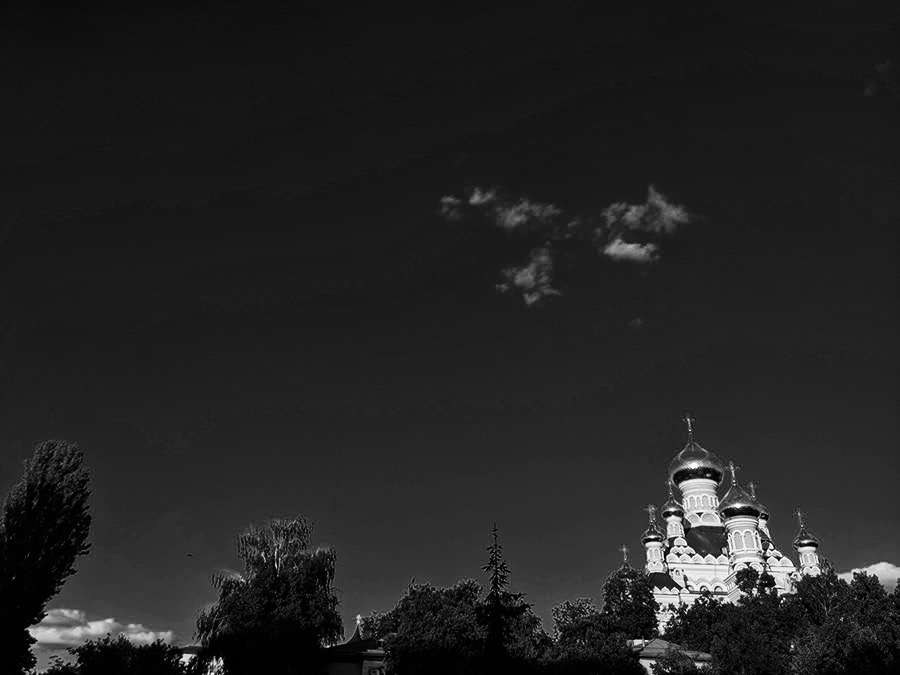
Walking the long way across Kiev to my hostel I passed some kind of military barracks, the men in the courtyard behind the tall walls singing some sort of bizarre mashup of a military running song, a Soviet men’s choir hymn, and Gregorian chant. This was both a beautiful and hilariously weird soundtrack to my walk.

I’d visited Kiev briefly last year on flight layover, when I’d only had an hour to run out of the airport and tune into a tree in a small section of woods outside. Fittingly, this time as I was taking the train from that same airport into the city, I could vividly feel all of the trees that we were cruising by, with an alarming intensity. It was like my sense of self extended out the window and encompassed all of the trees, ferns and shrubs as we rolled by, my consciousness sliding thrillingly through and merging with each living thing as it passed. The setting sun dialed up the intensity of the golden green colors on the forested landscape and the deep connection I felt to all of it was quite unlike anything I’d ever experienced before. It was sublime.
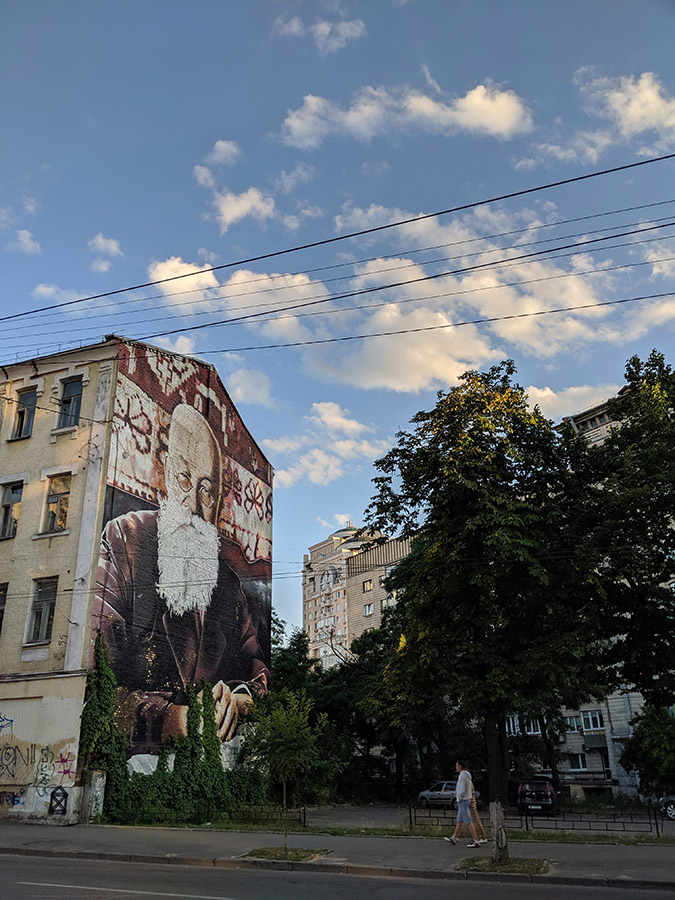
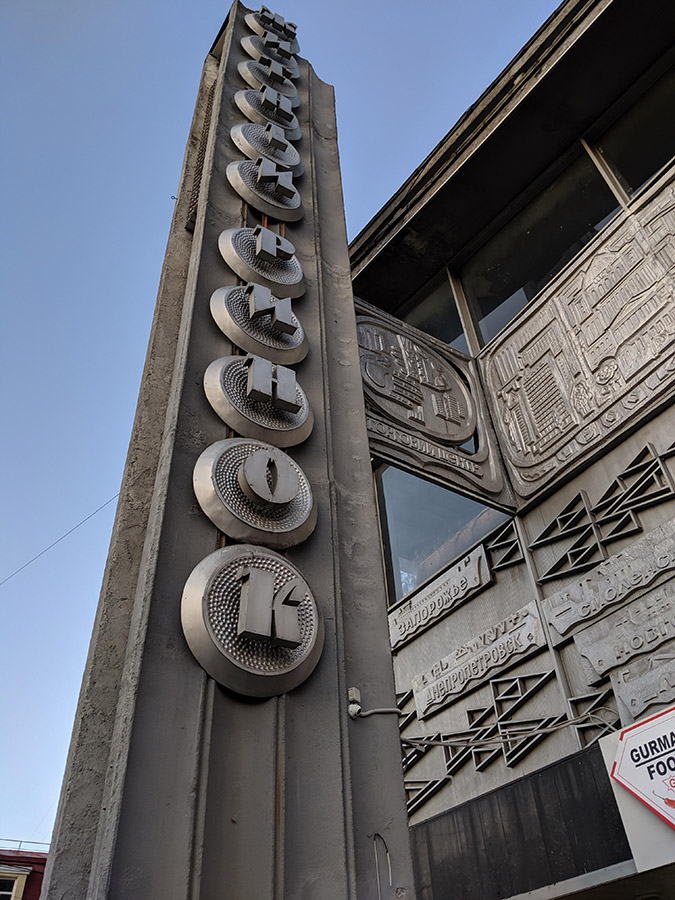
Morning rush hour on the Kiev metro was absolutely insane, making even the Tokyo metro seem underutilized. I had taken the metro traveling to and from dinner the night before and figured I had it down, but during the morning rush hour I was jammed into the center of one of the cars by the crush of commuters, a fact that I wasn’t troubled by at all until the car suddenly jerked forward and I wasn’t within arm’s reach of any of the the bars or handles. I took this development in stride by completely falling over into the people around me, but due to the human density on display I was quickly crowd-surfed back into place as if nothing had happened. I spent the rest of the ride palming the ceiling for dear life.
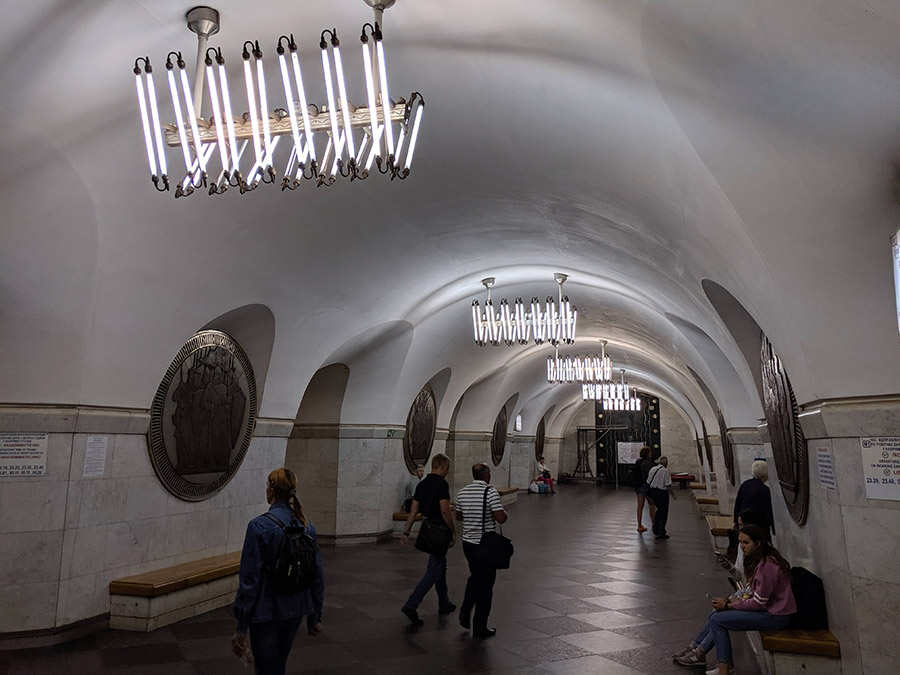
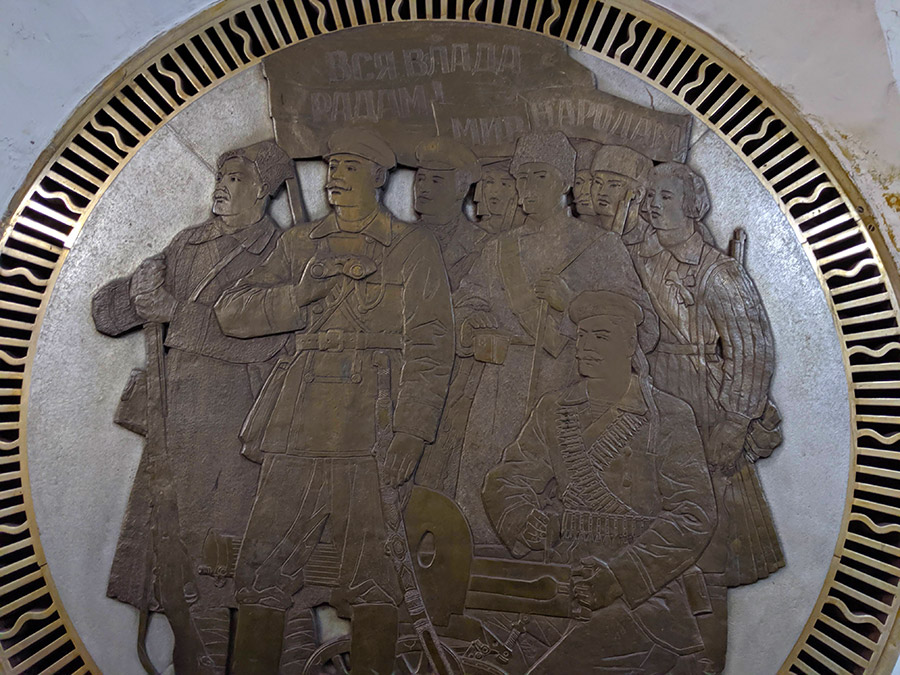
The Kiev Metro was nowhere near as beautiful or grandiose as the Moscow version, but it made up for this somewhat in that all of the stations made a truly bizarre and ominous loud clicking sound, which made you feel like you were at that point in the zombie movie right before everything just totally goes to shit. I could only guess this was some kind of bat-like echolocation noise meant to help blind people navigate the underground tunnels. Either that or they have gigantic bats down there that feed on curious tourists but I didn’t want to think about that possibility until I was safely out of the country.

I found the people in Kiev to be generally pleasant and nobody tried to rob me, though they were VERY serious about the fact that it’s pronounced KEEV in spite of the fact that no English-speaking person has ever pronounced it that way ever. I’m talking about being totally 100% unable/unwilling to recognize that when I say “Key-ev” I am referring to the city we’re in right now. Whatevs, Keev.
